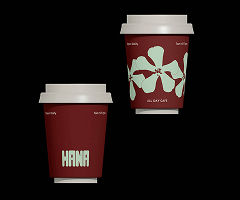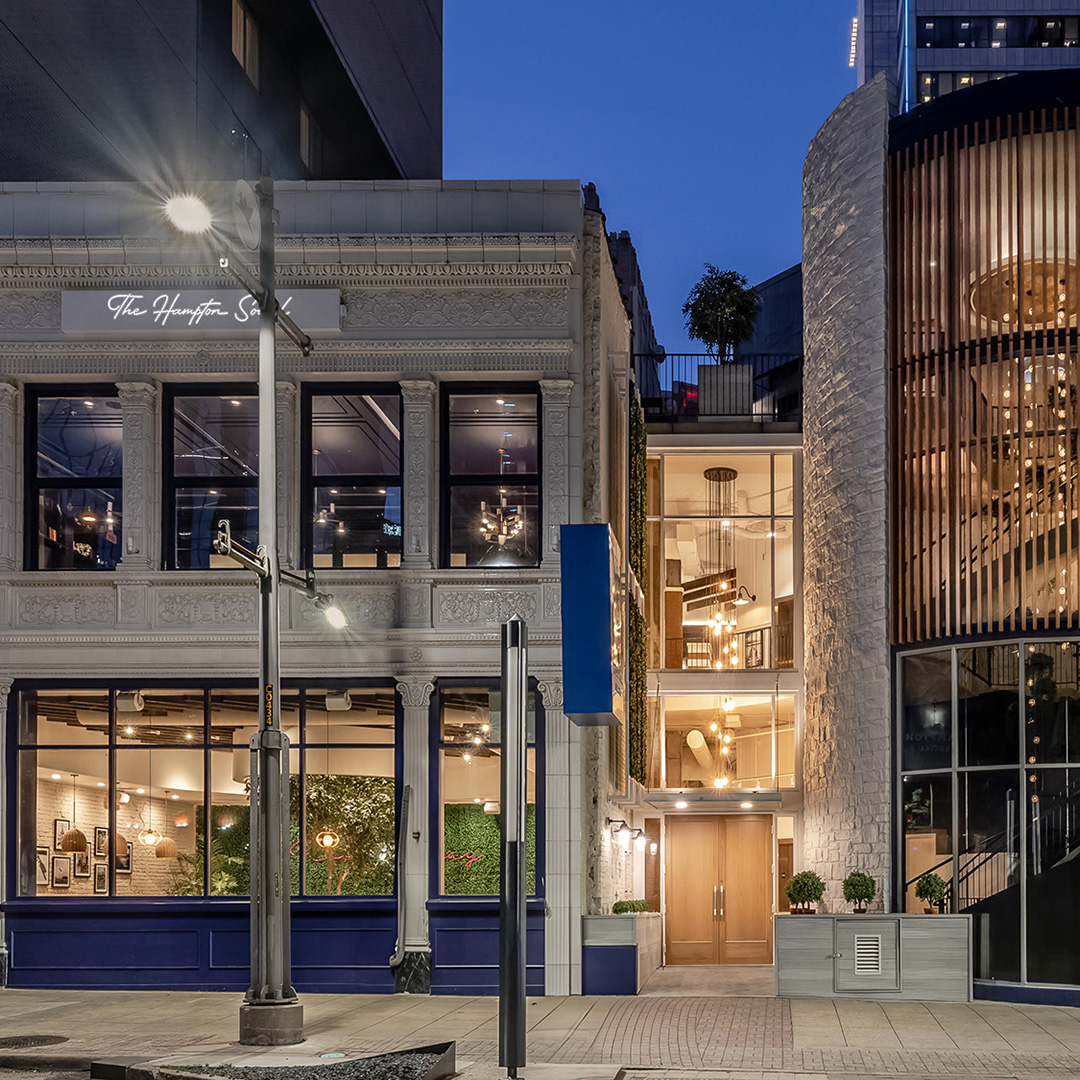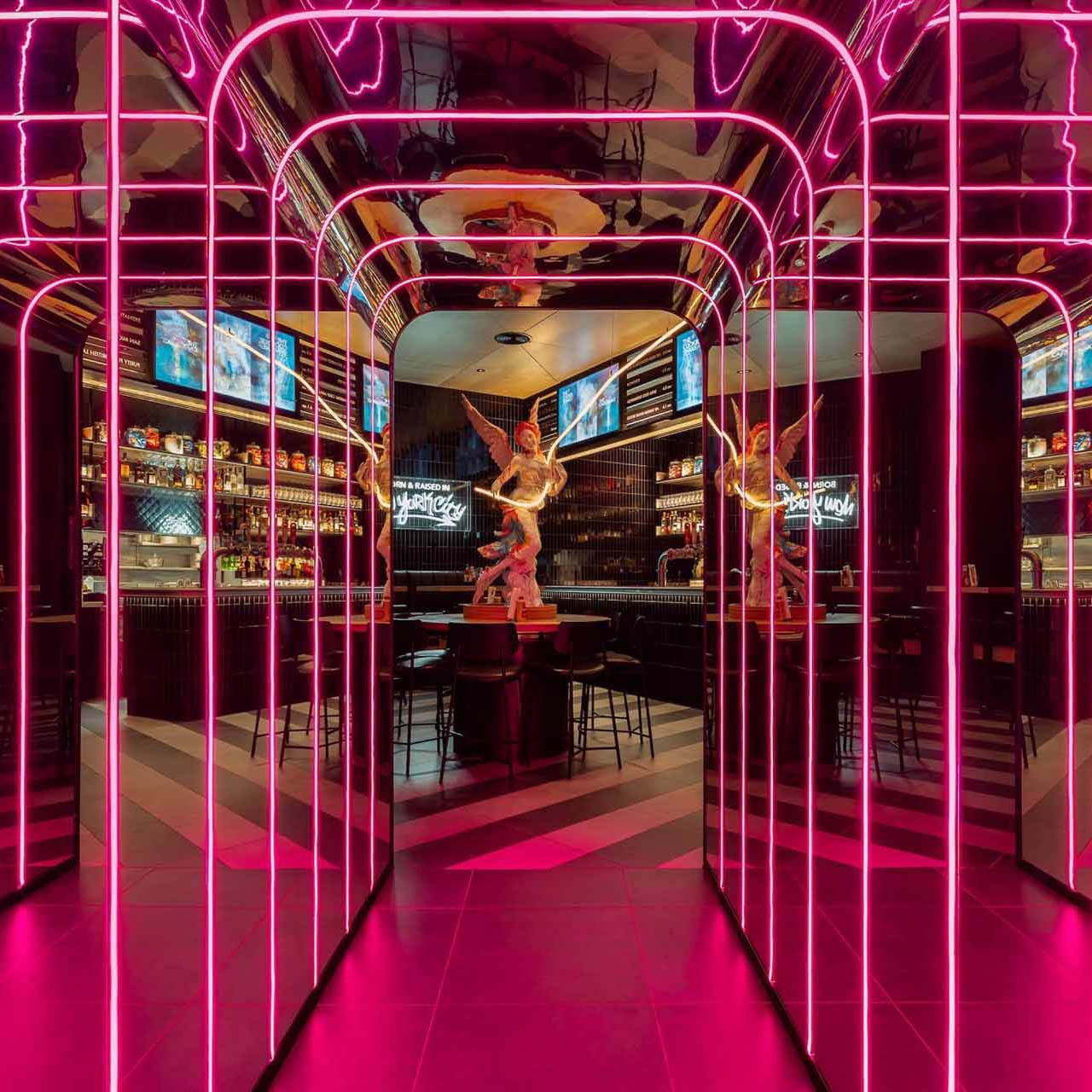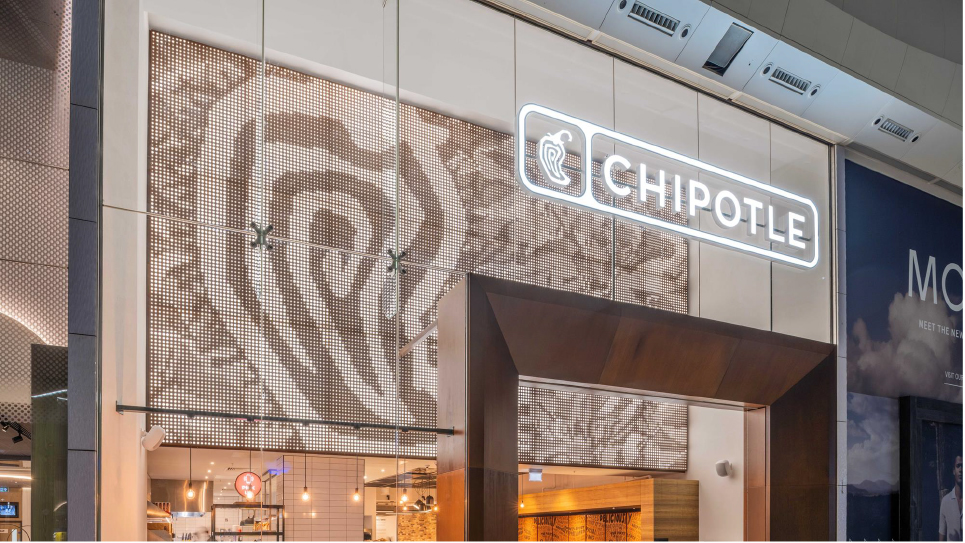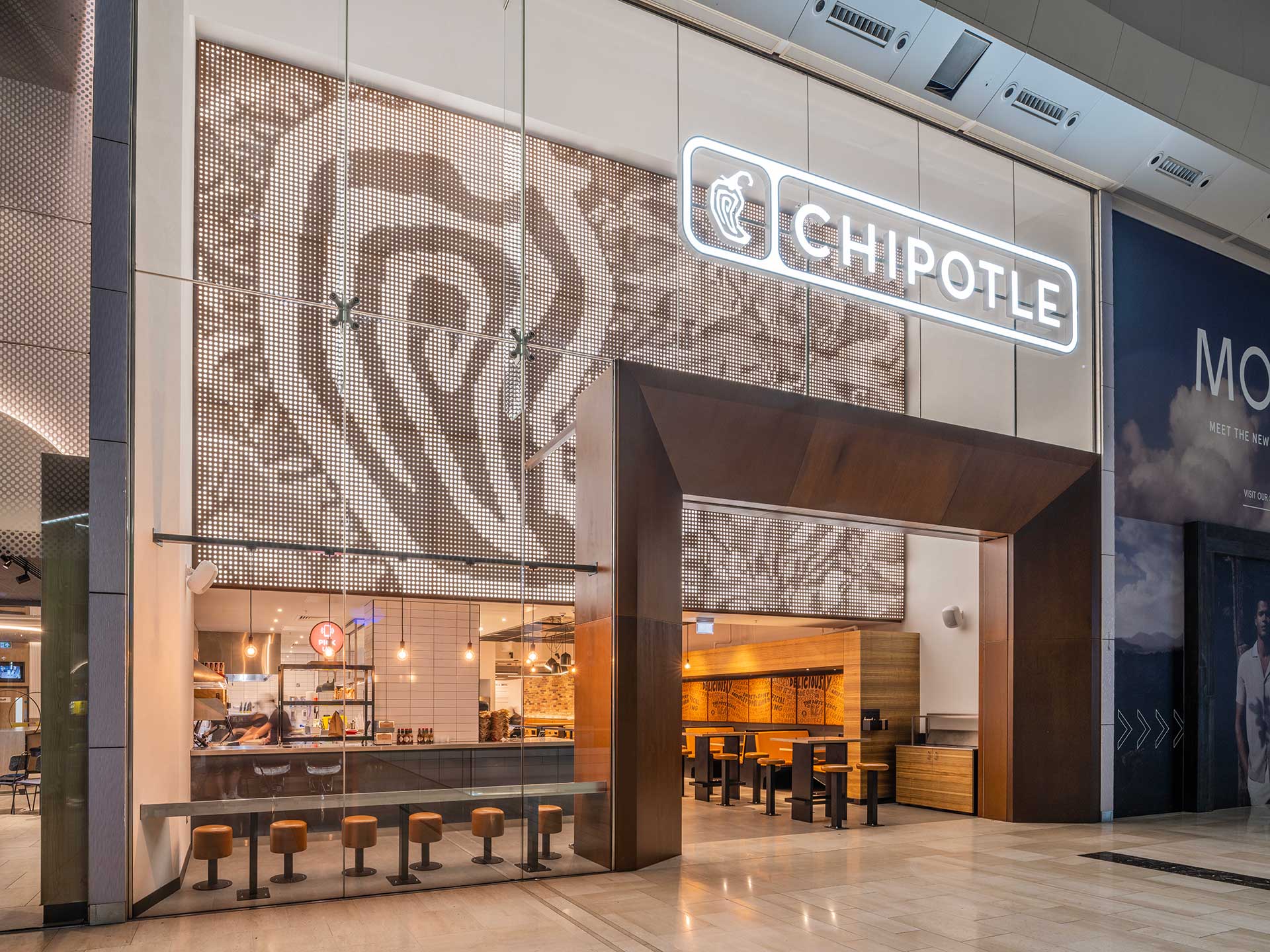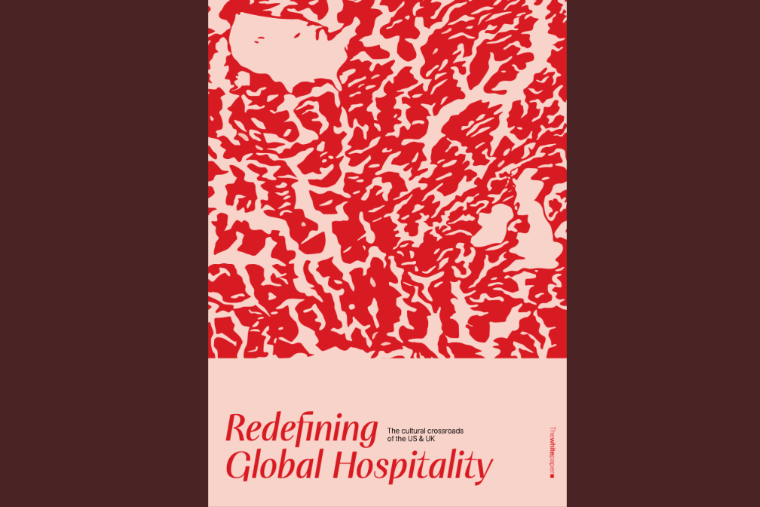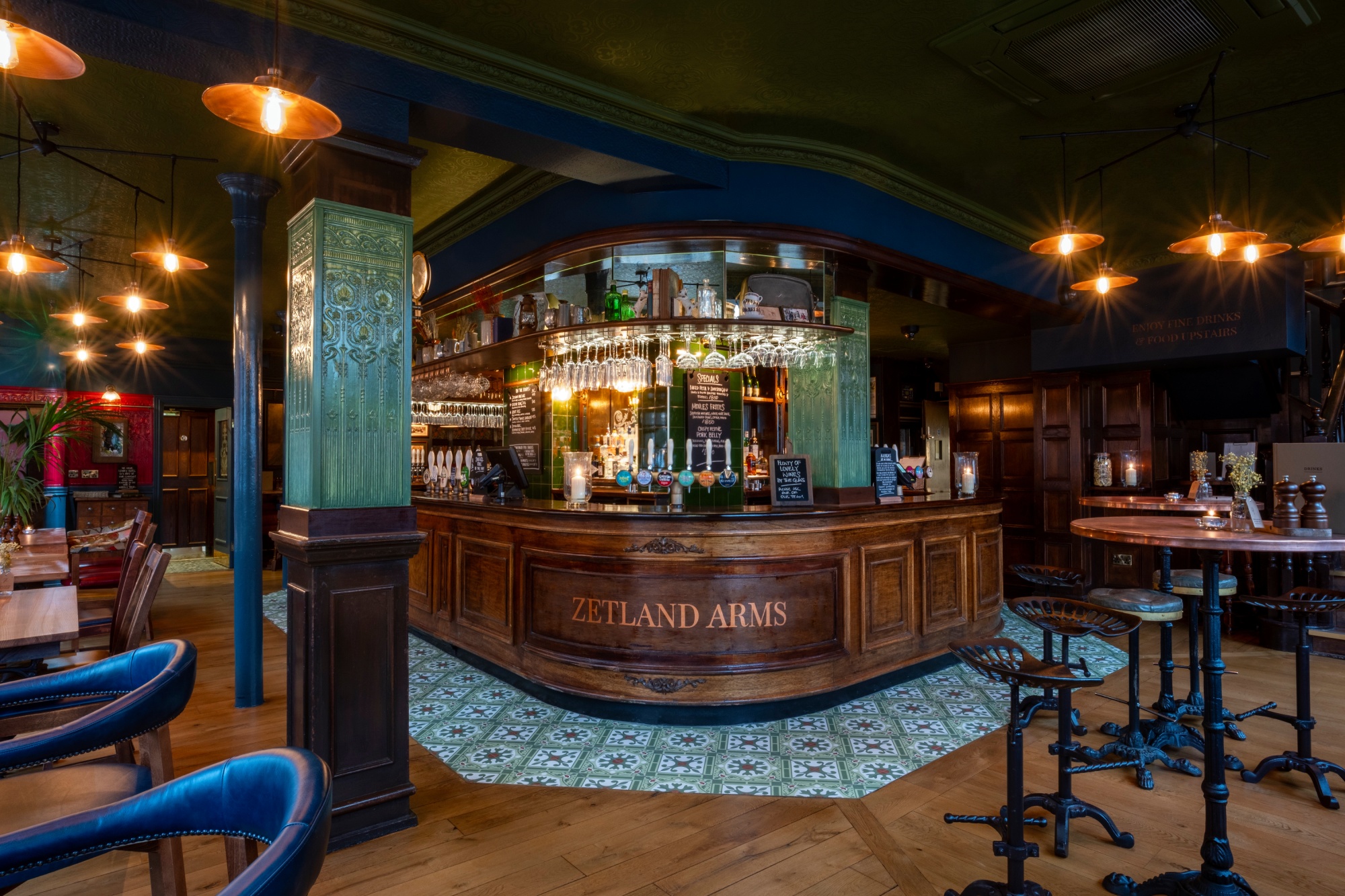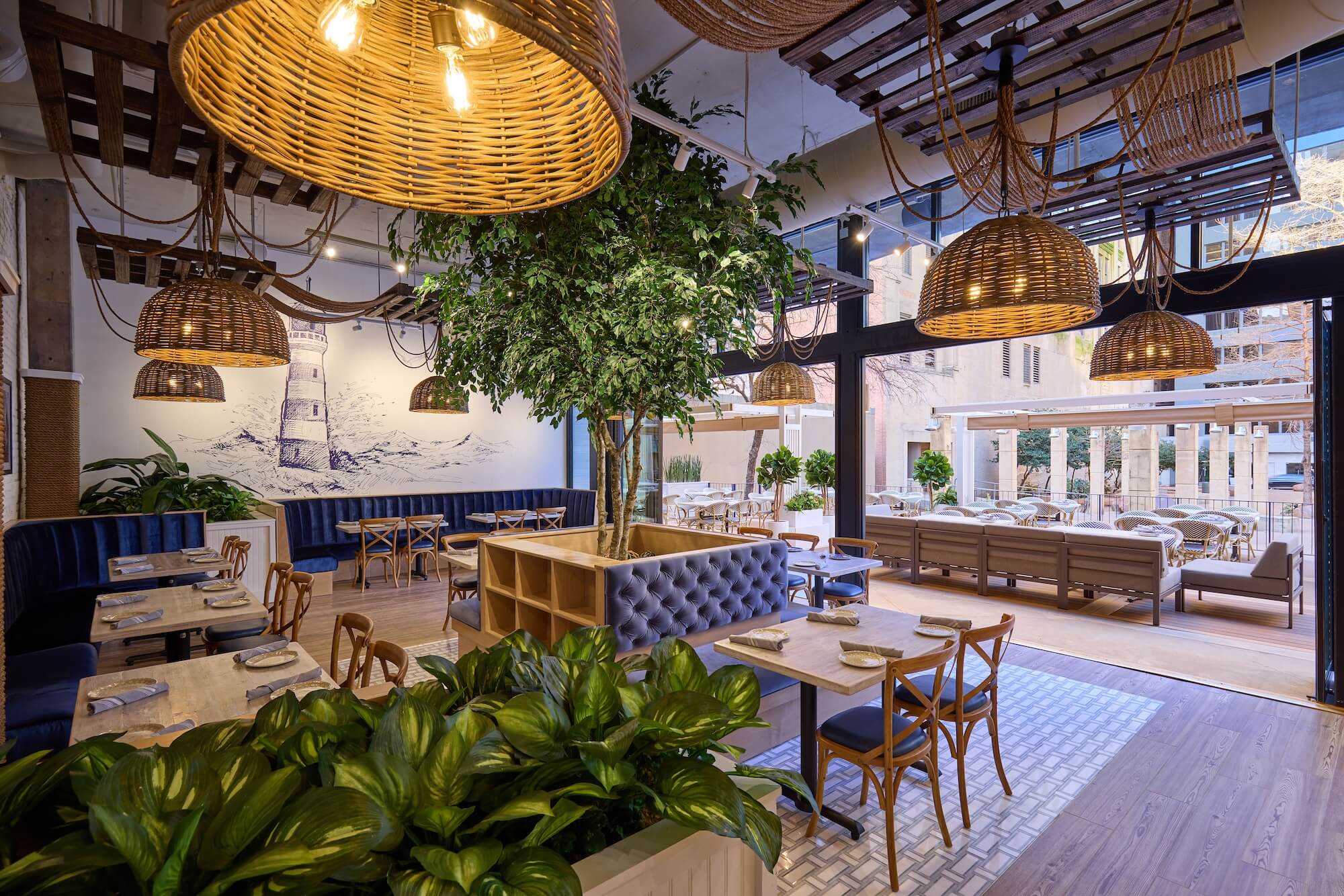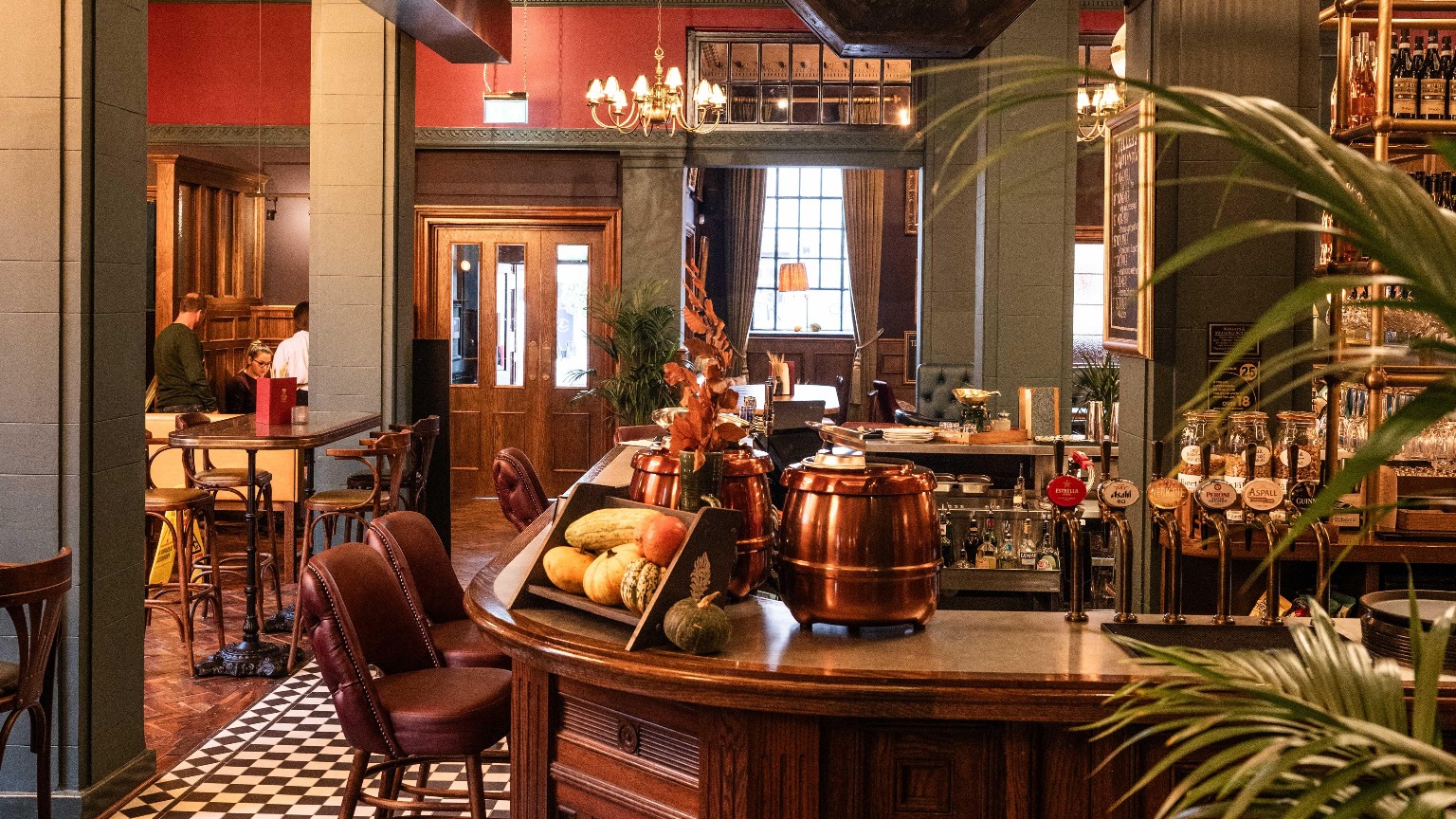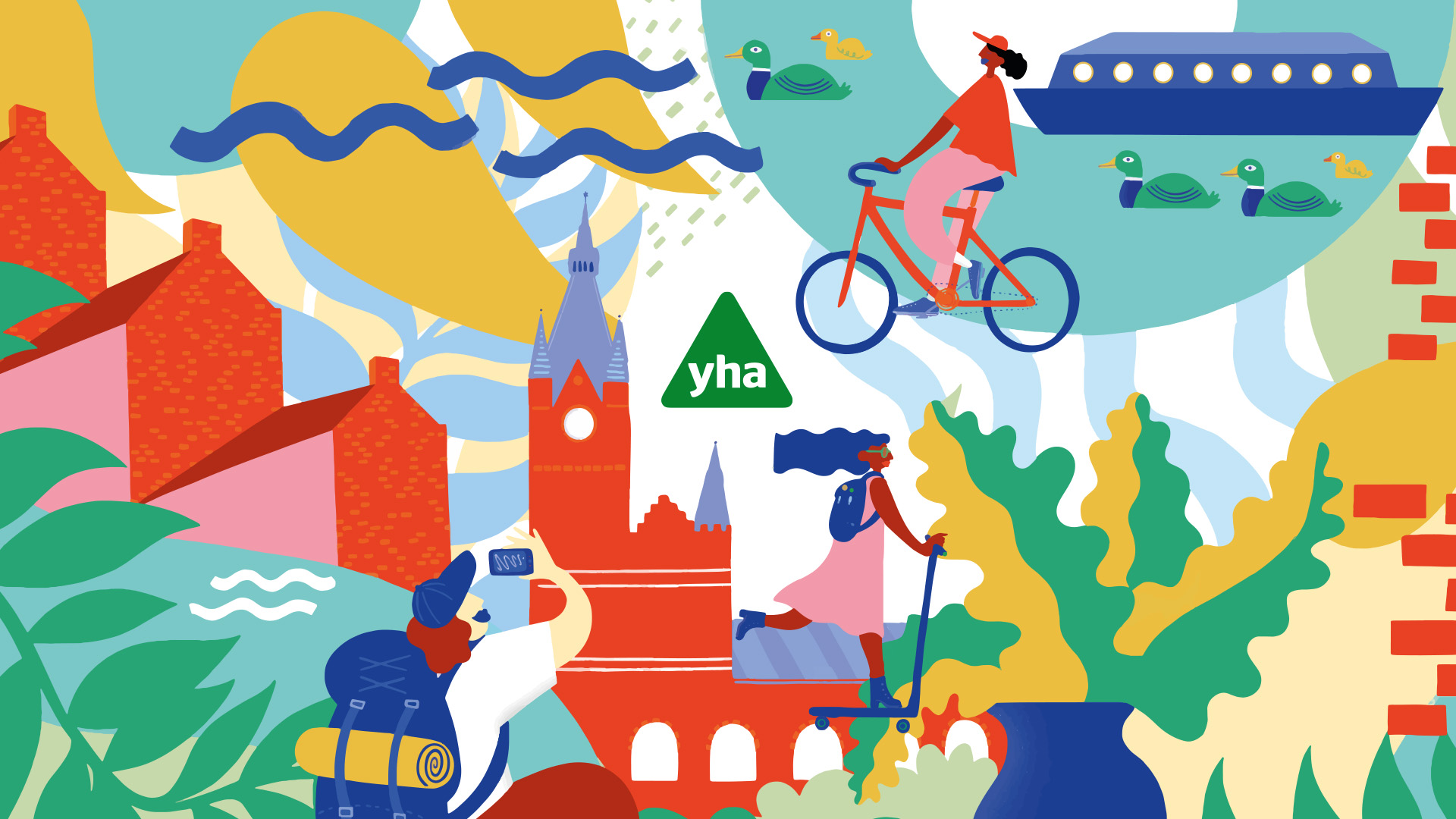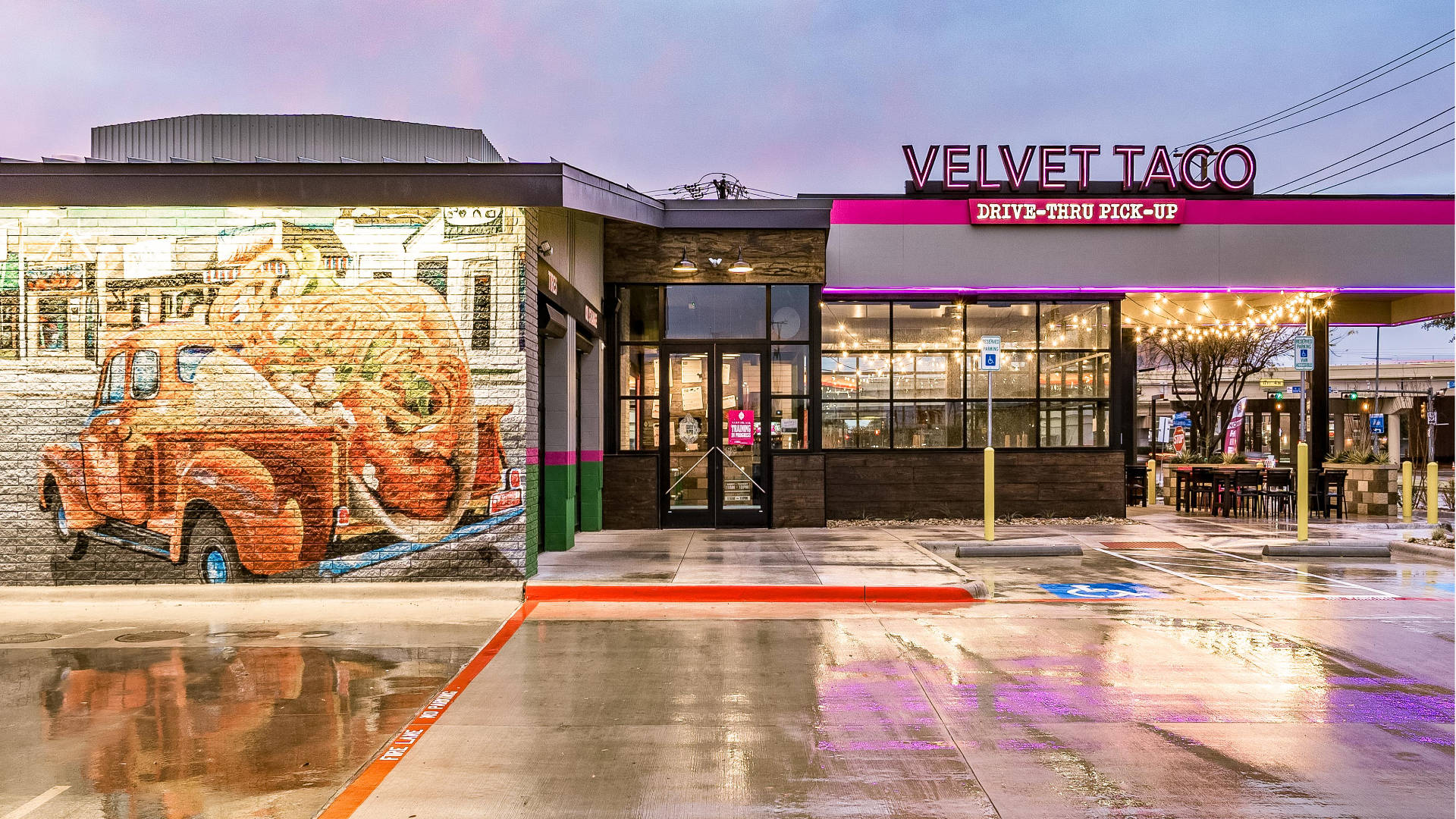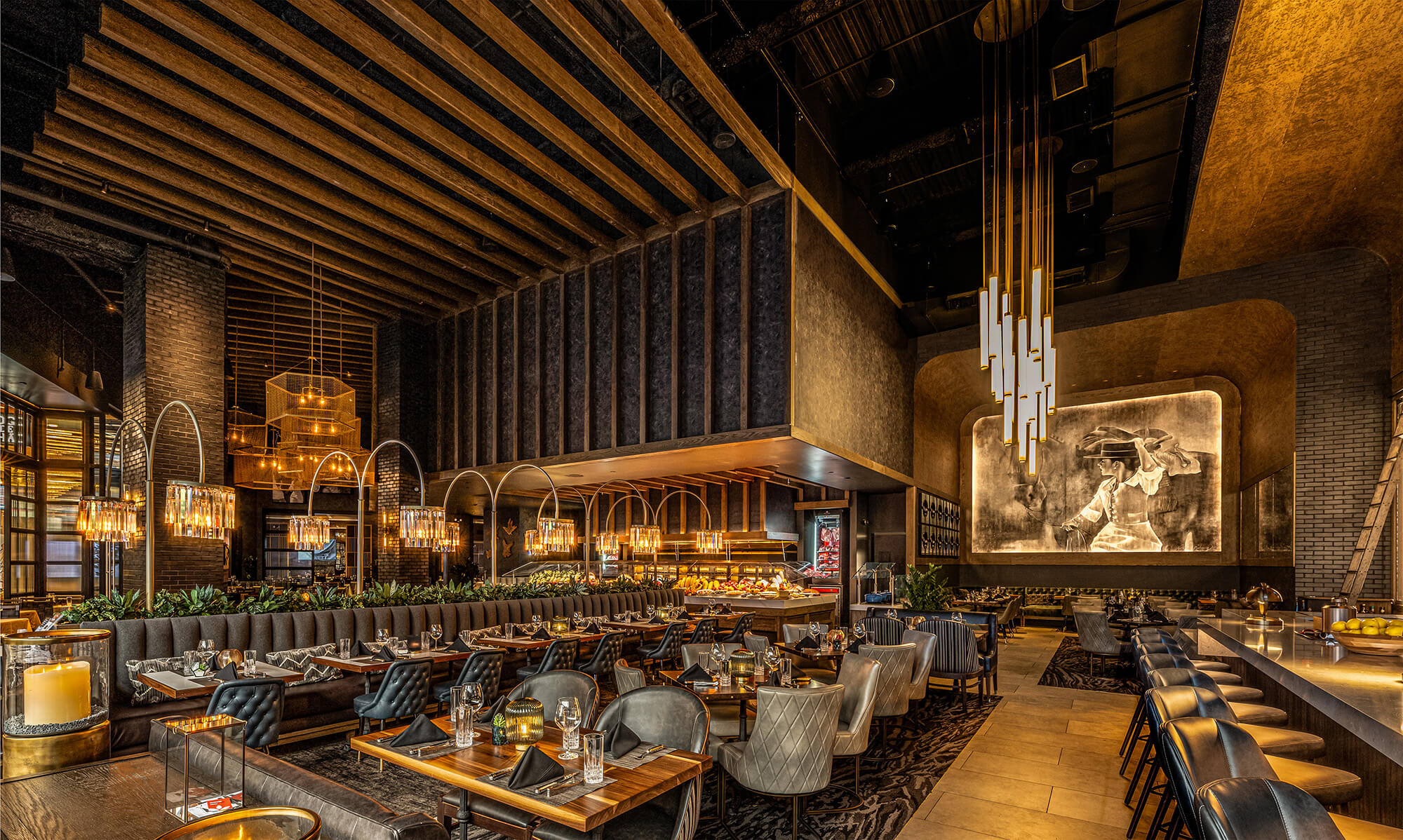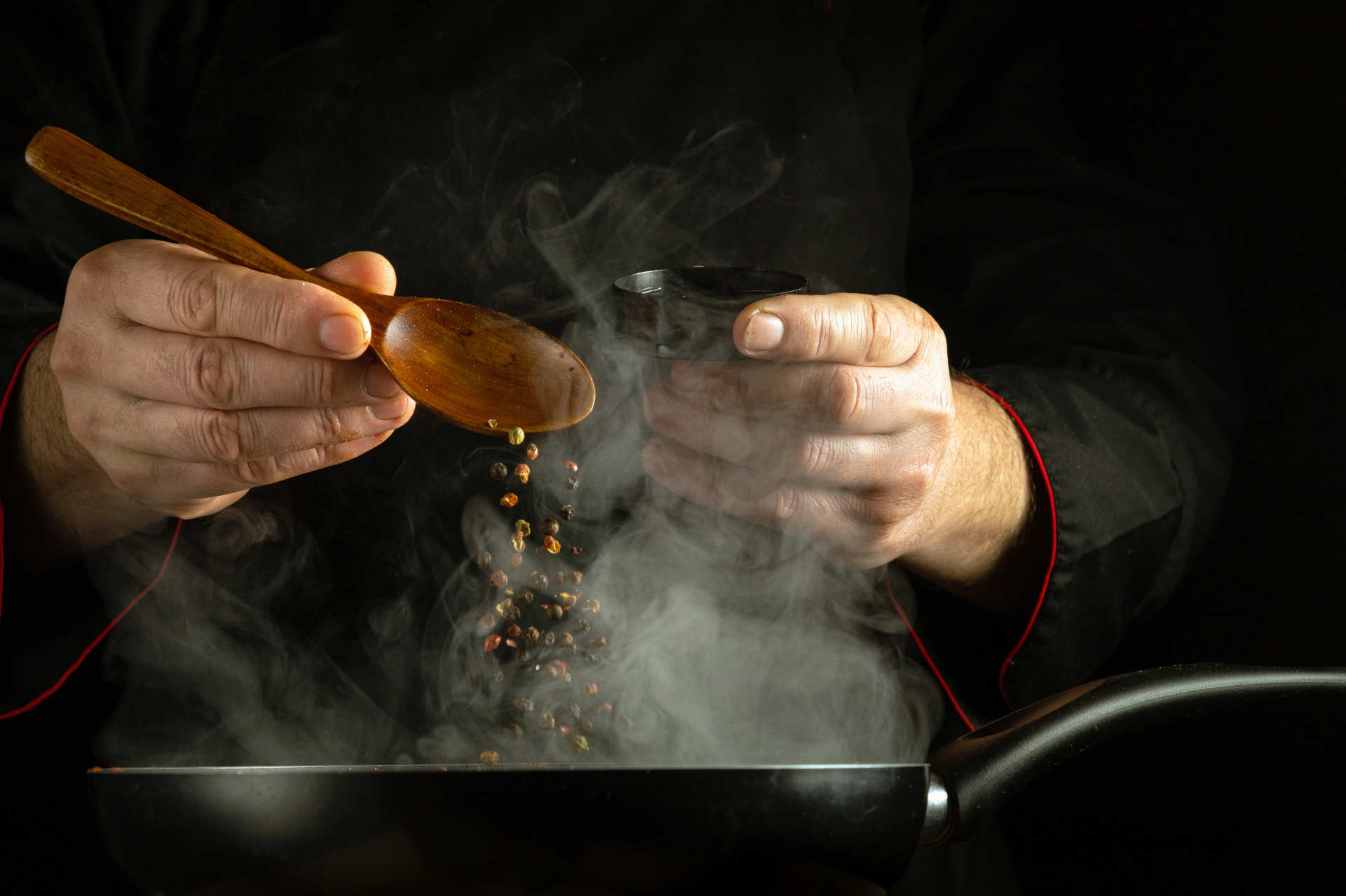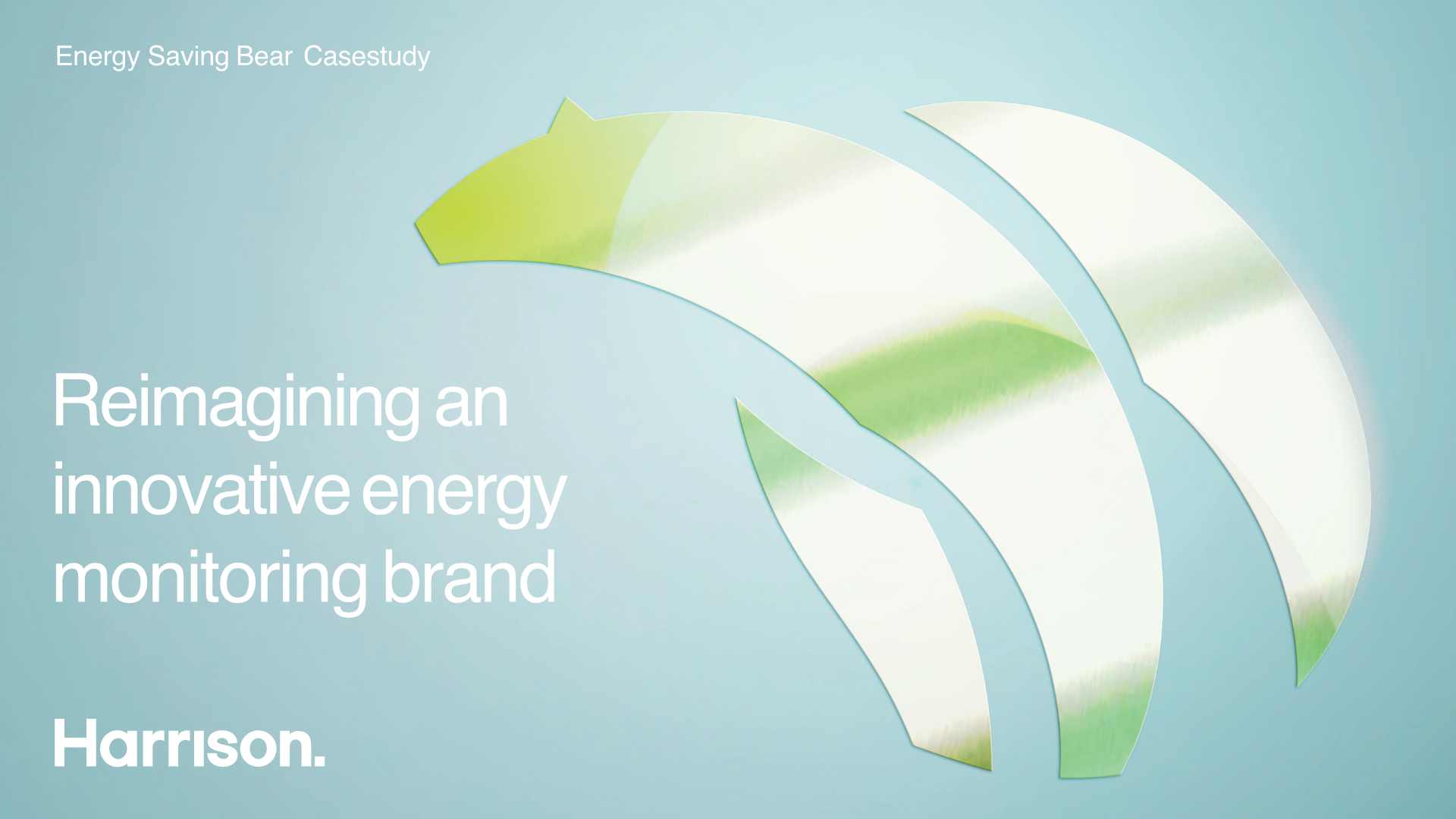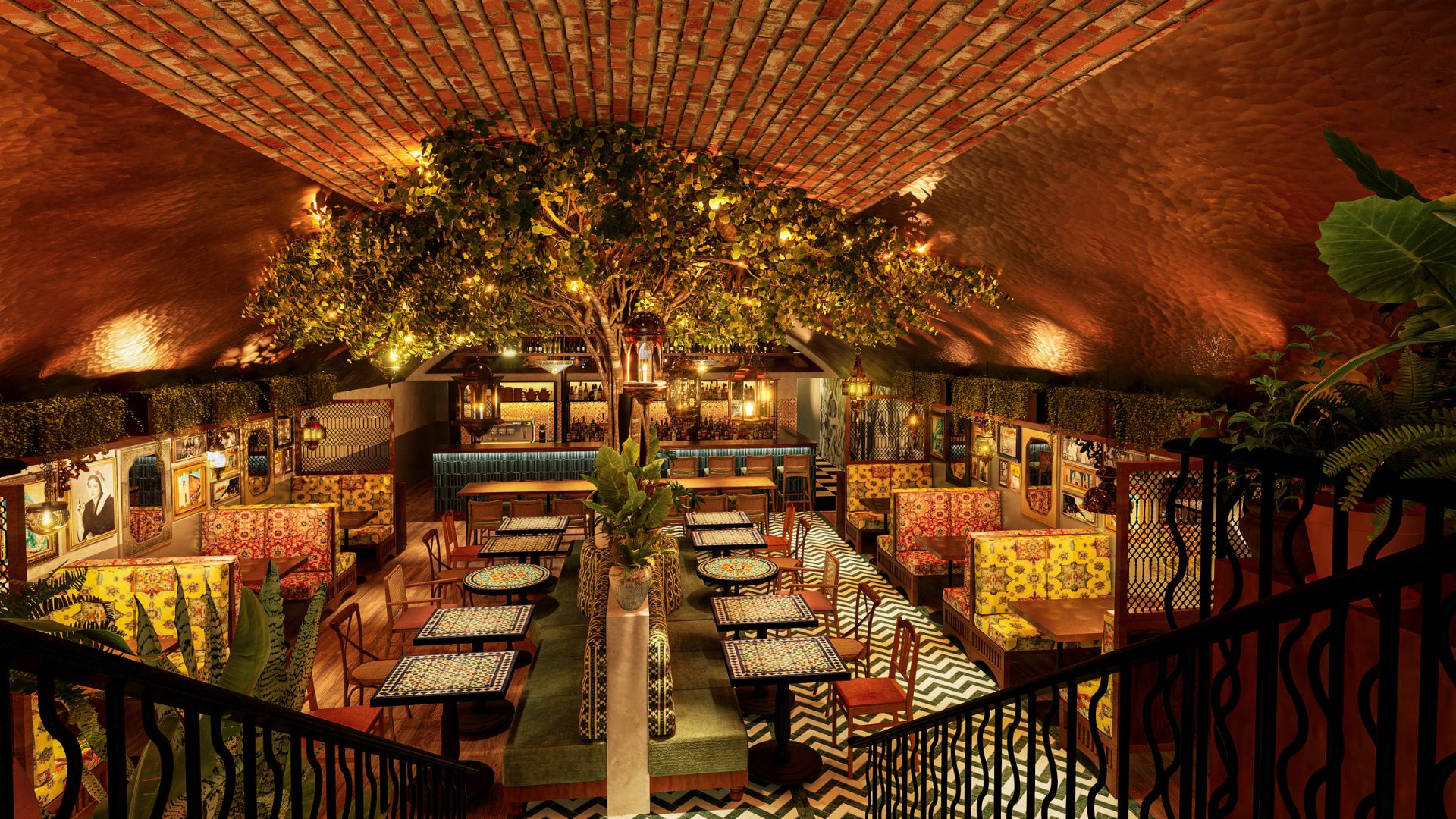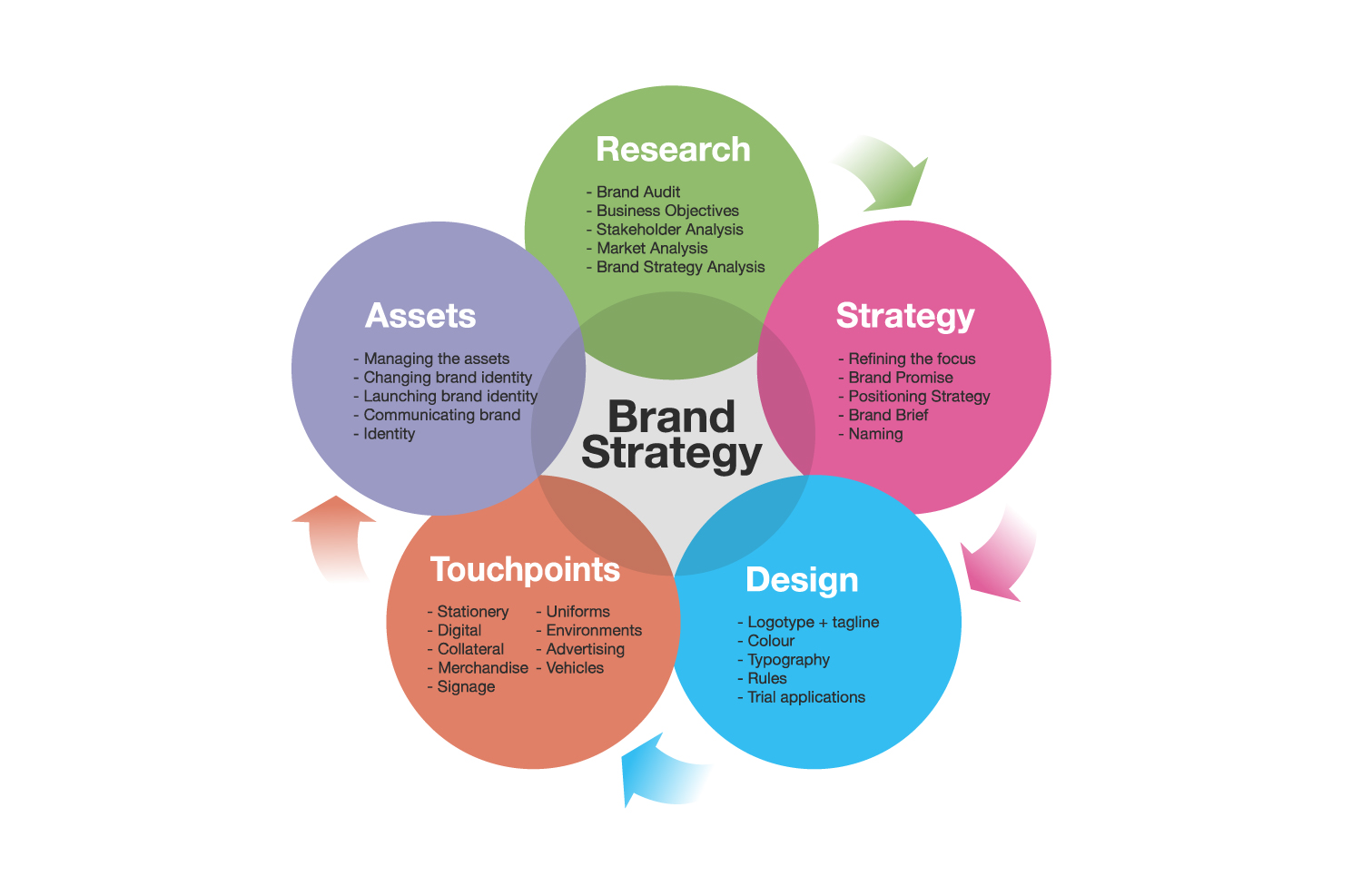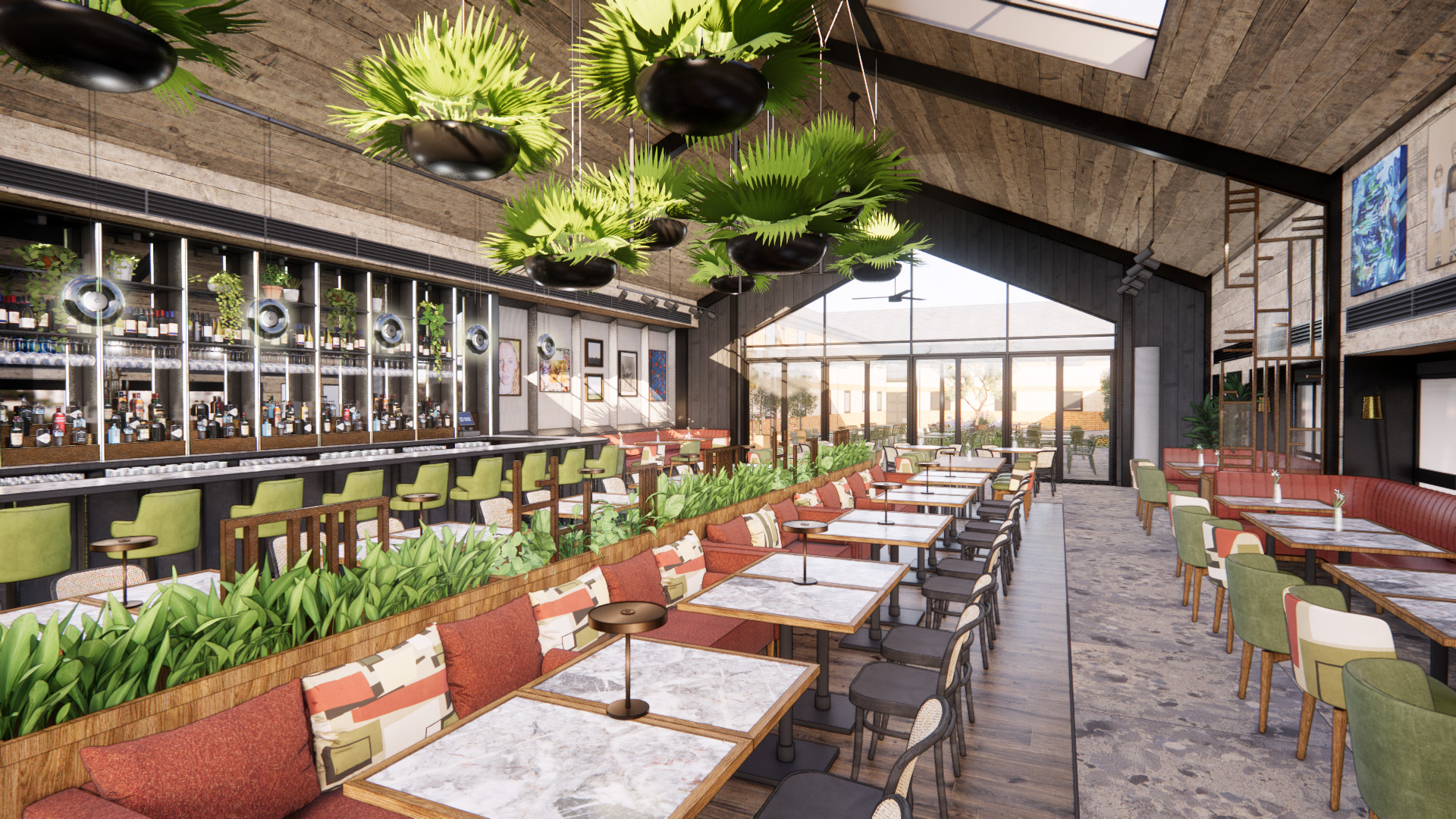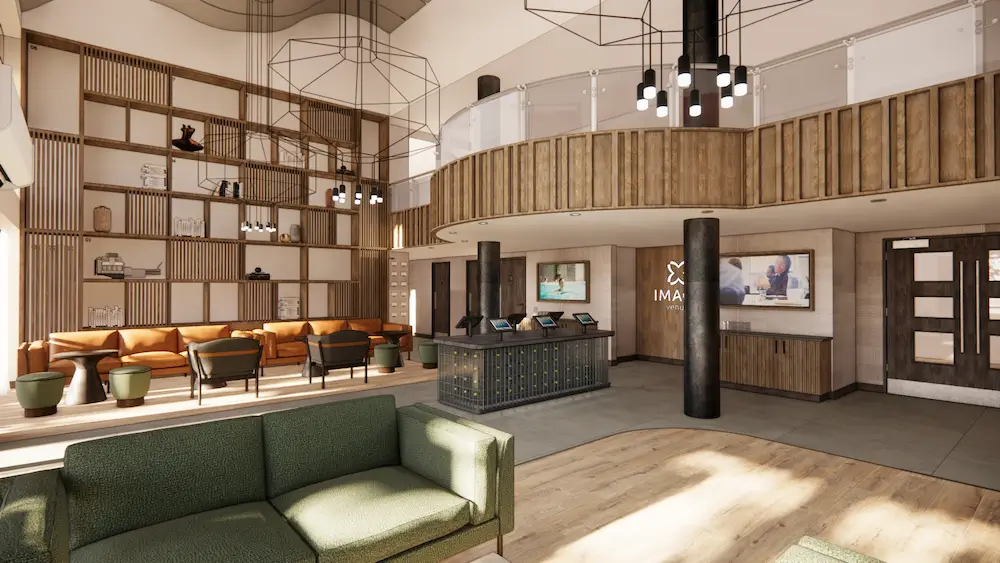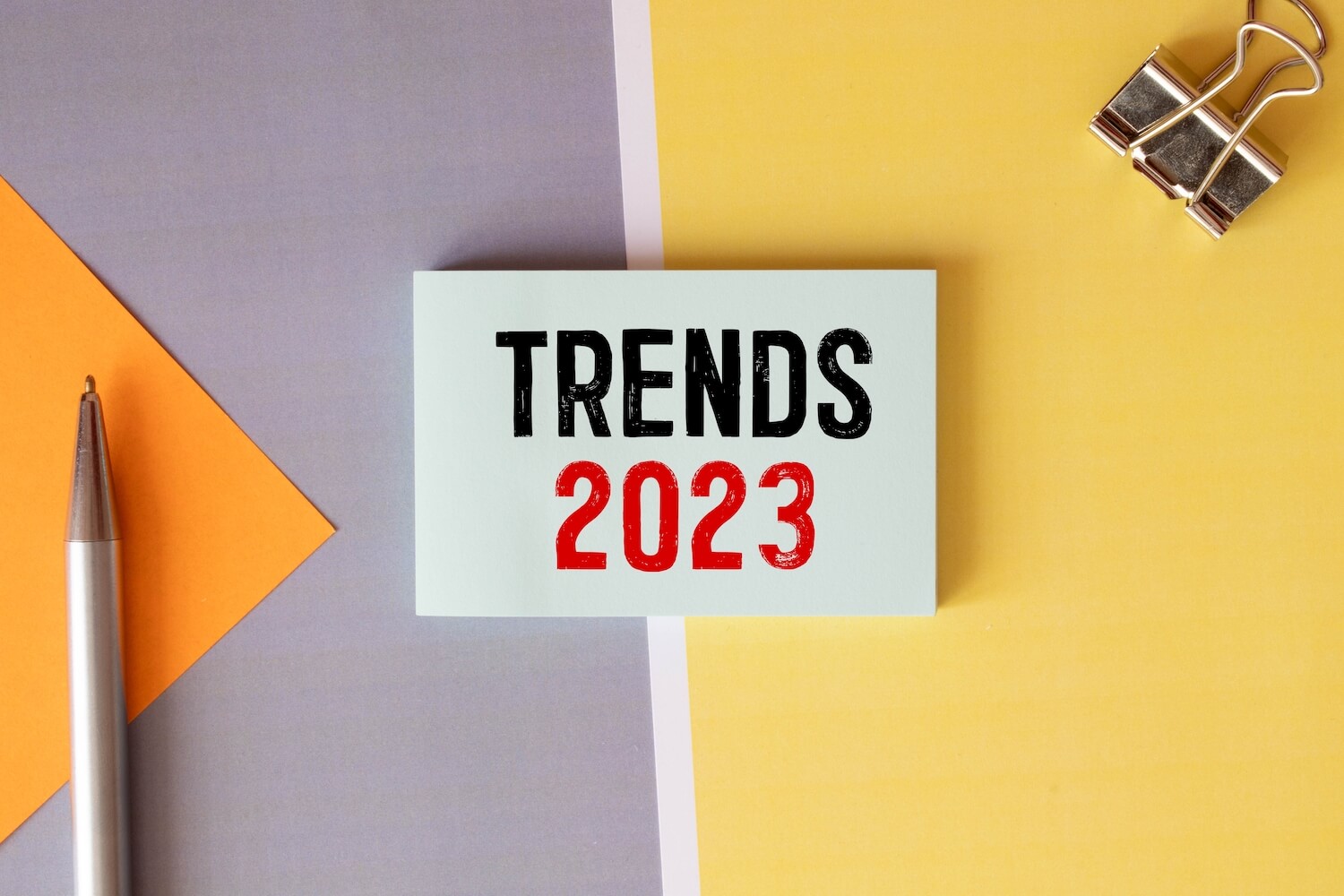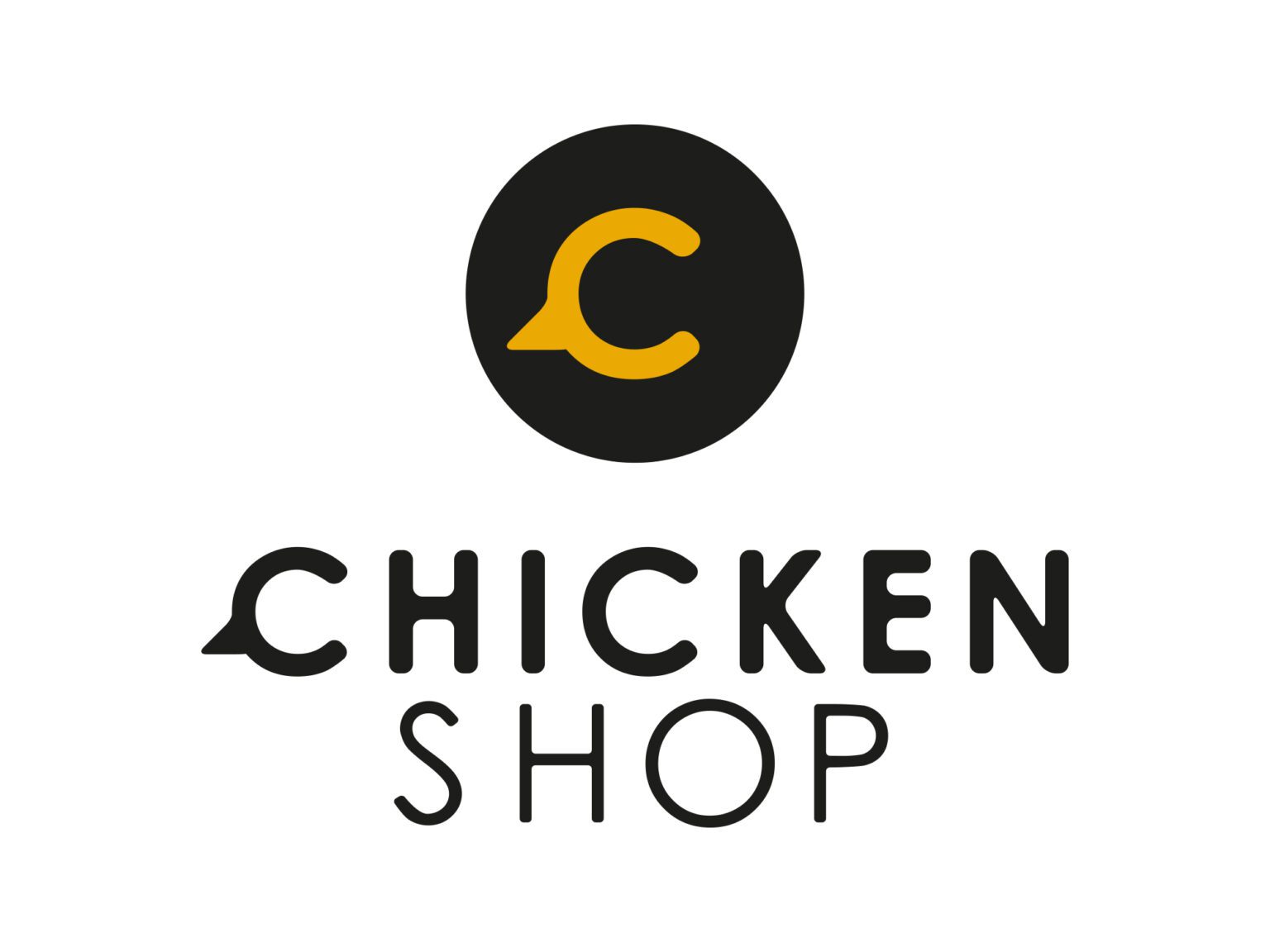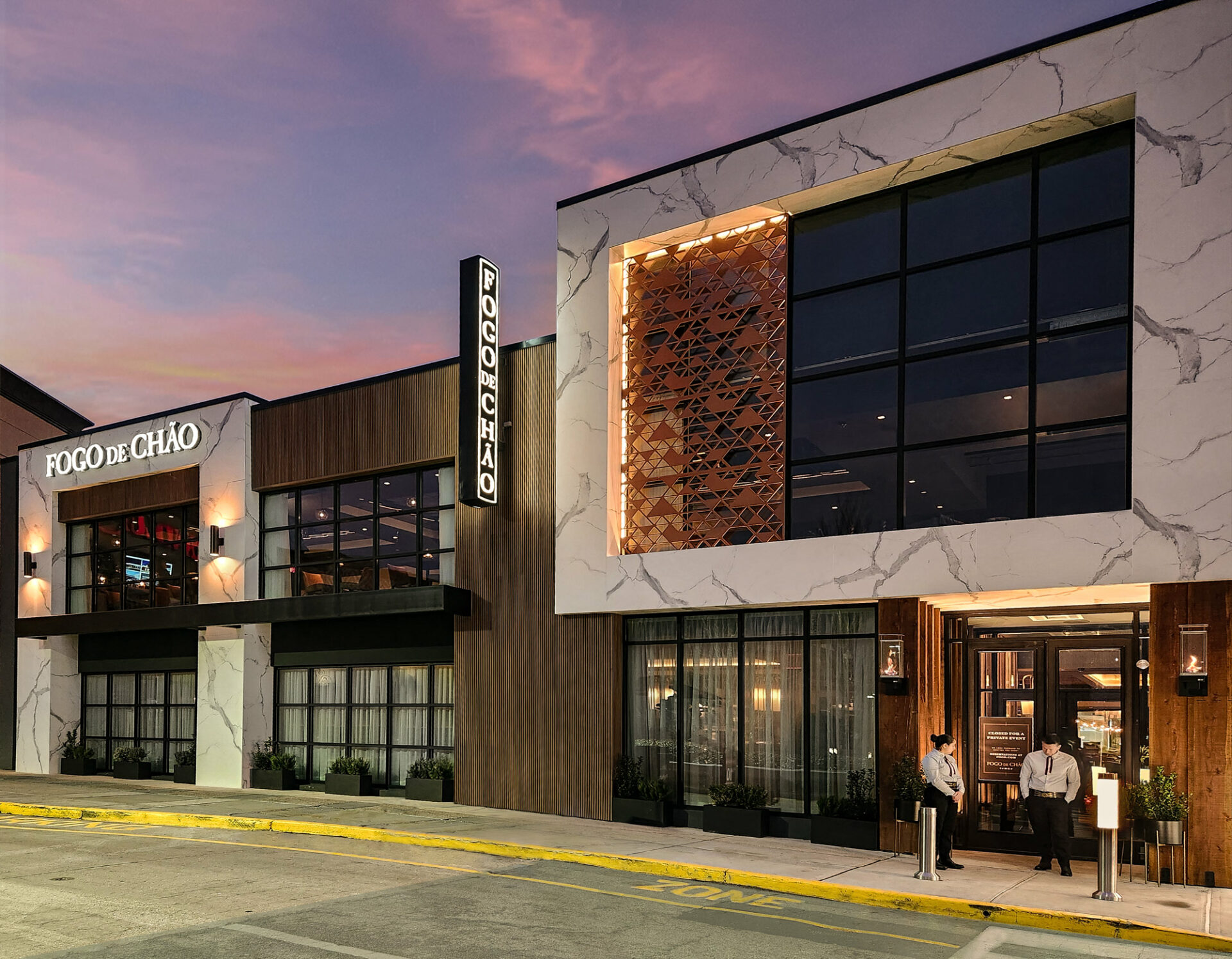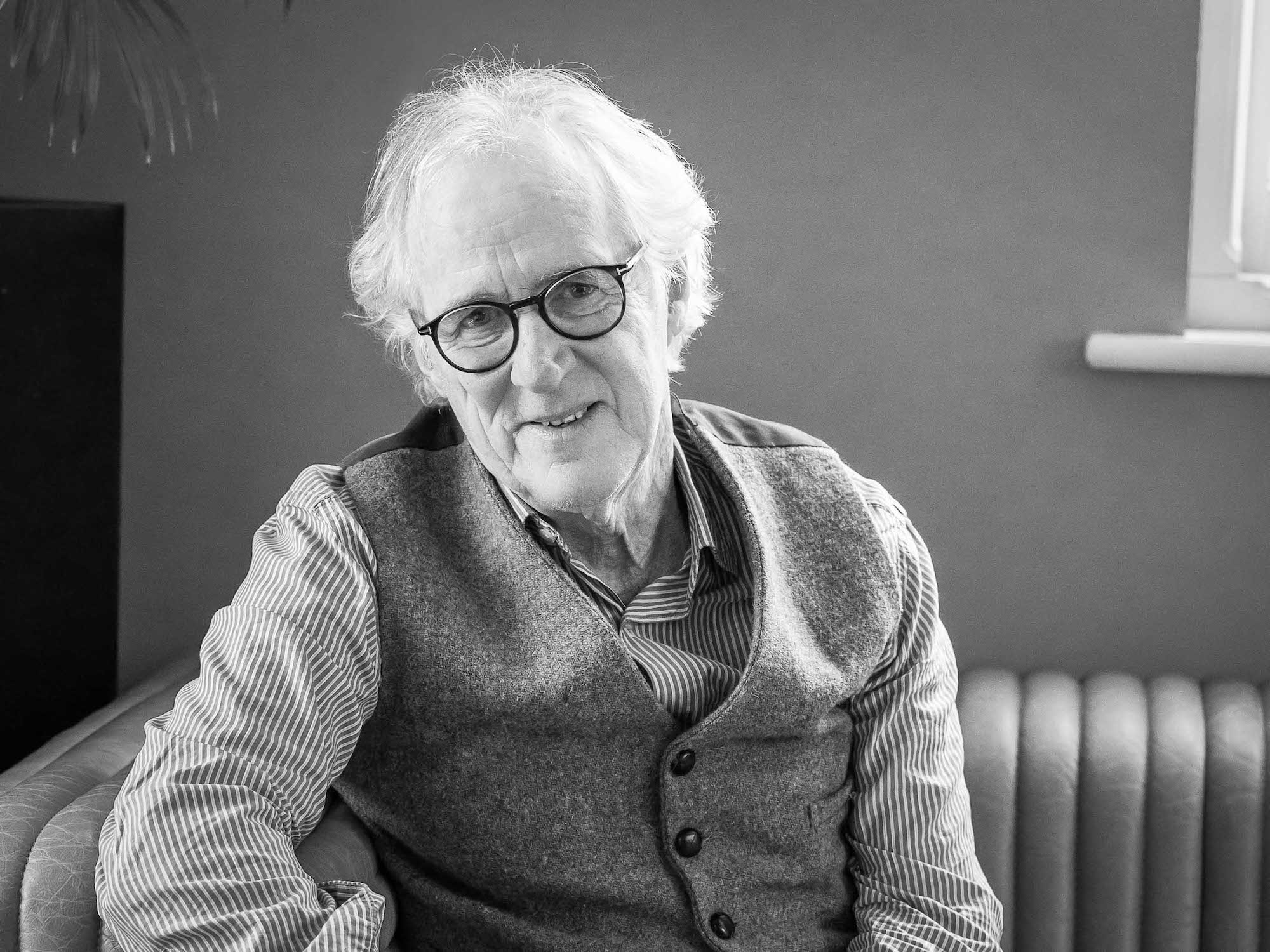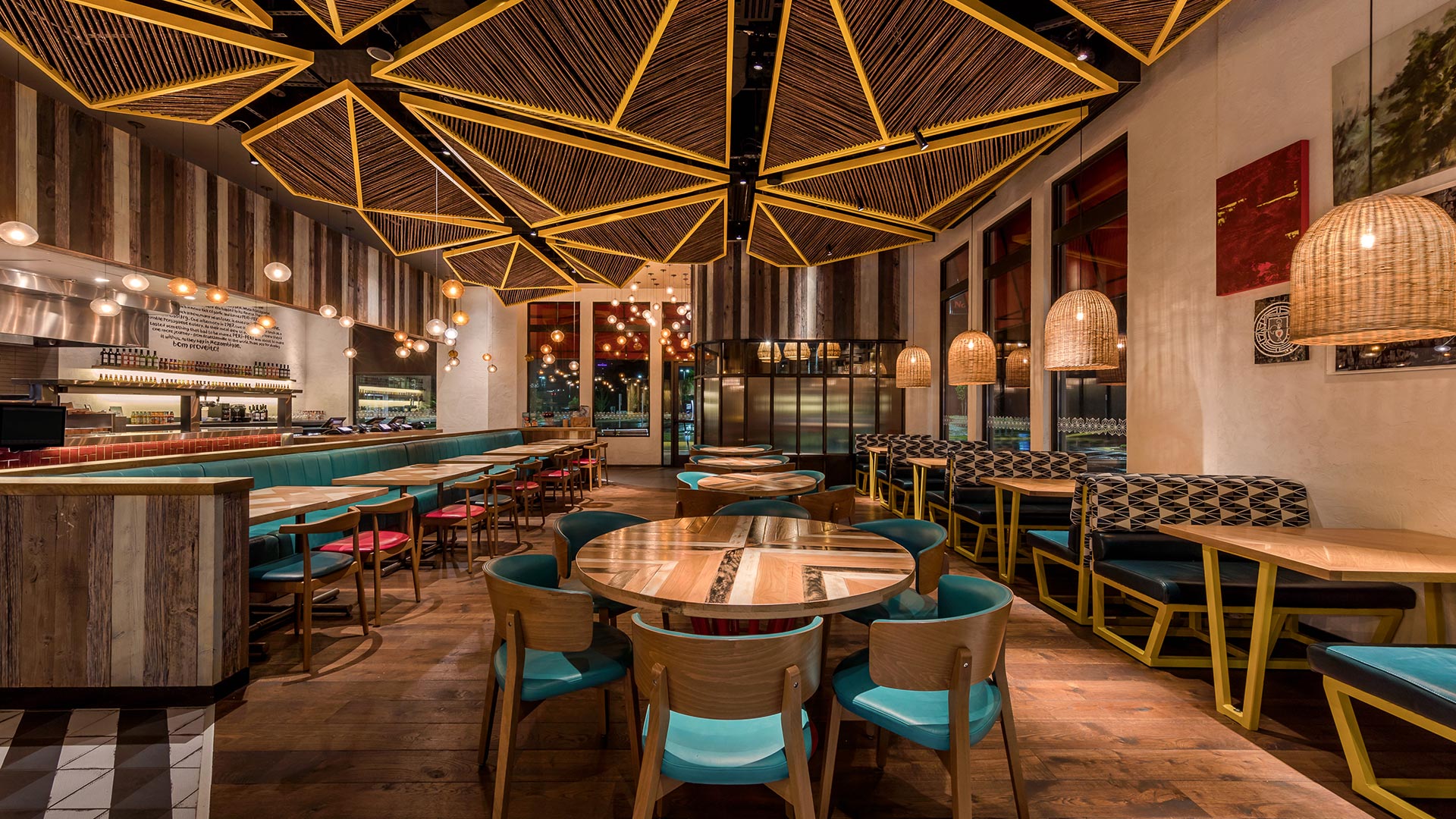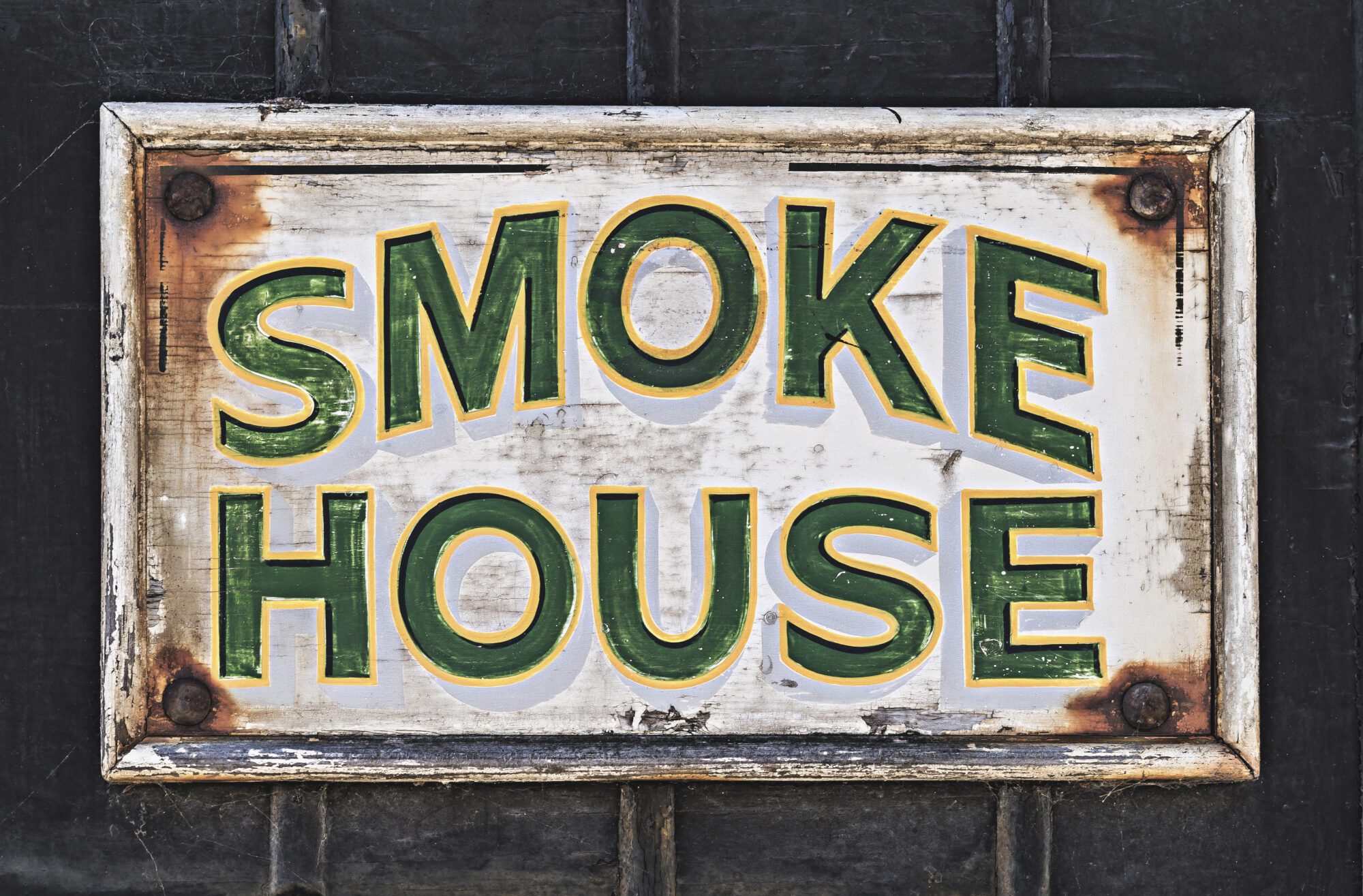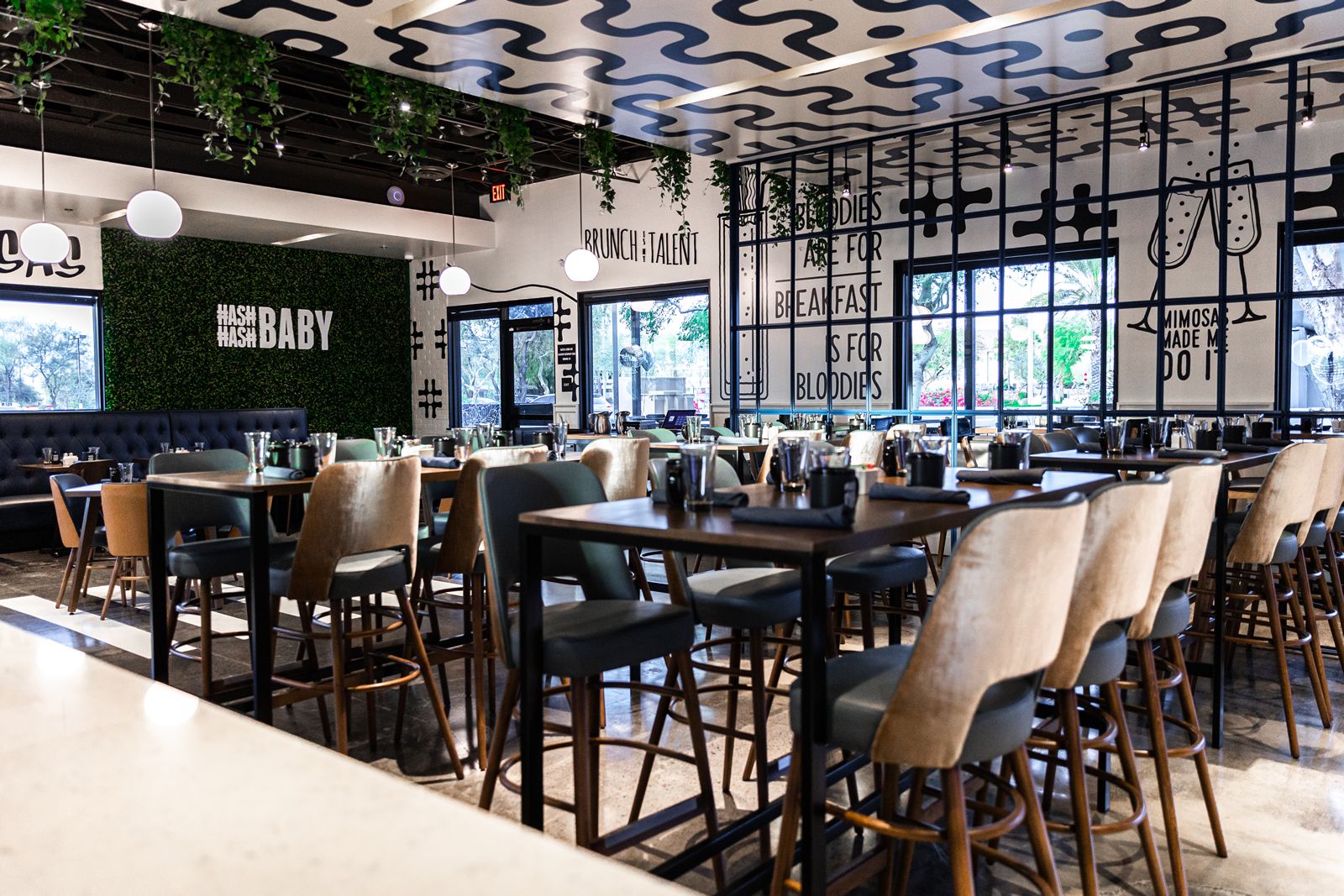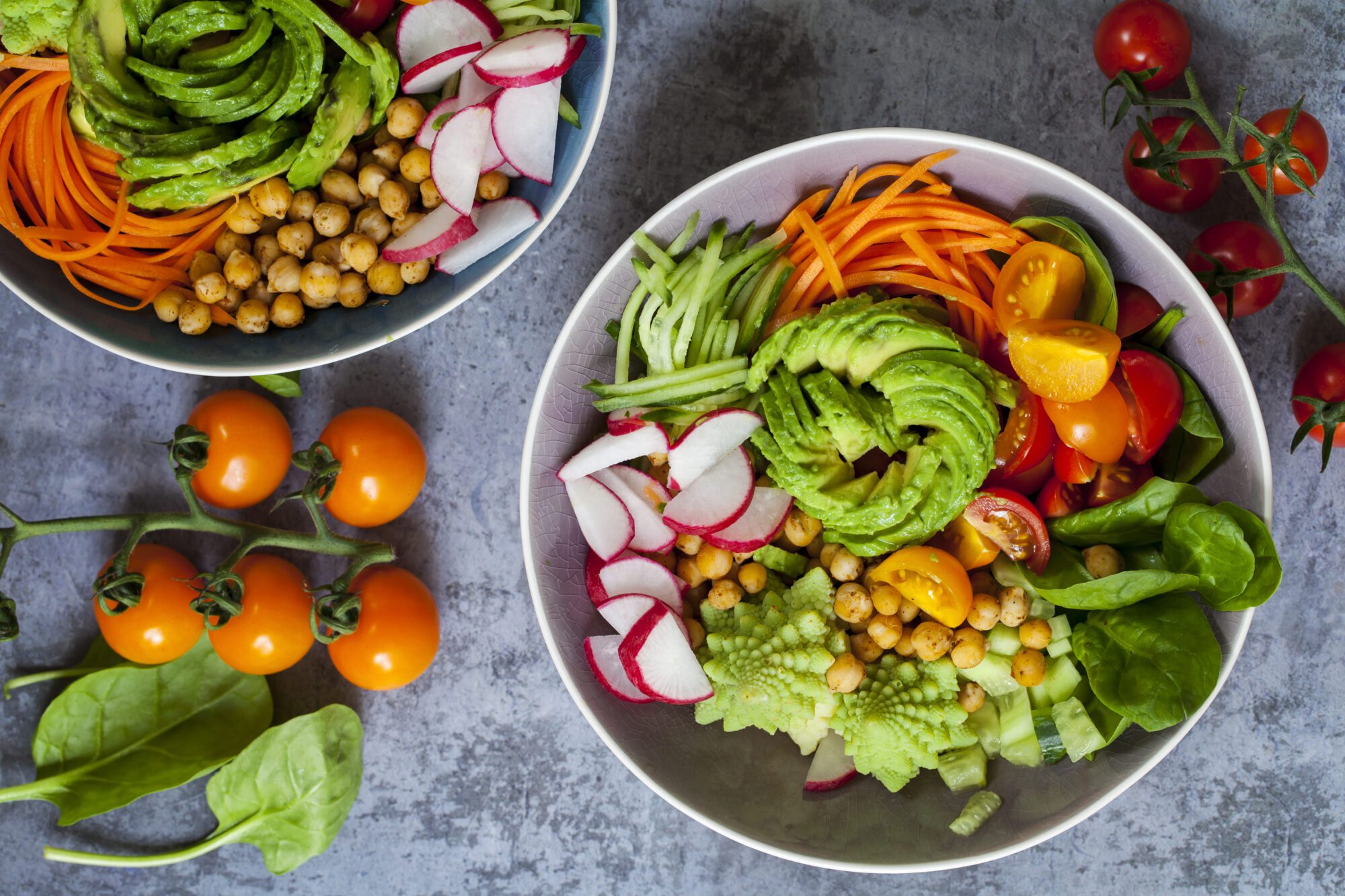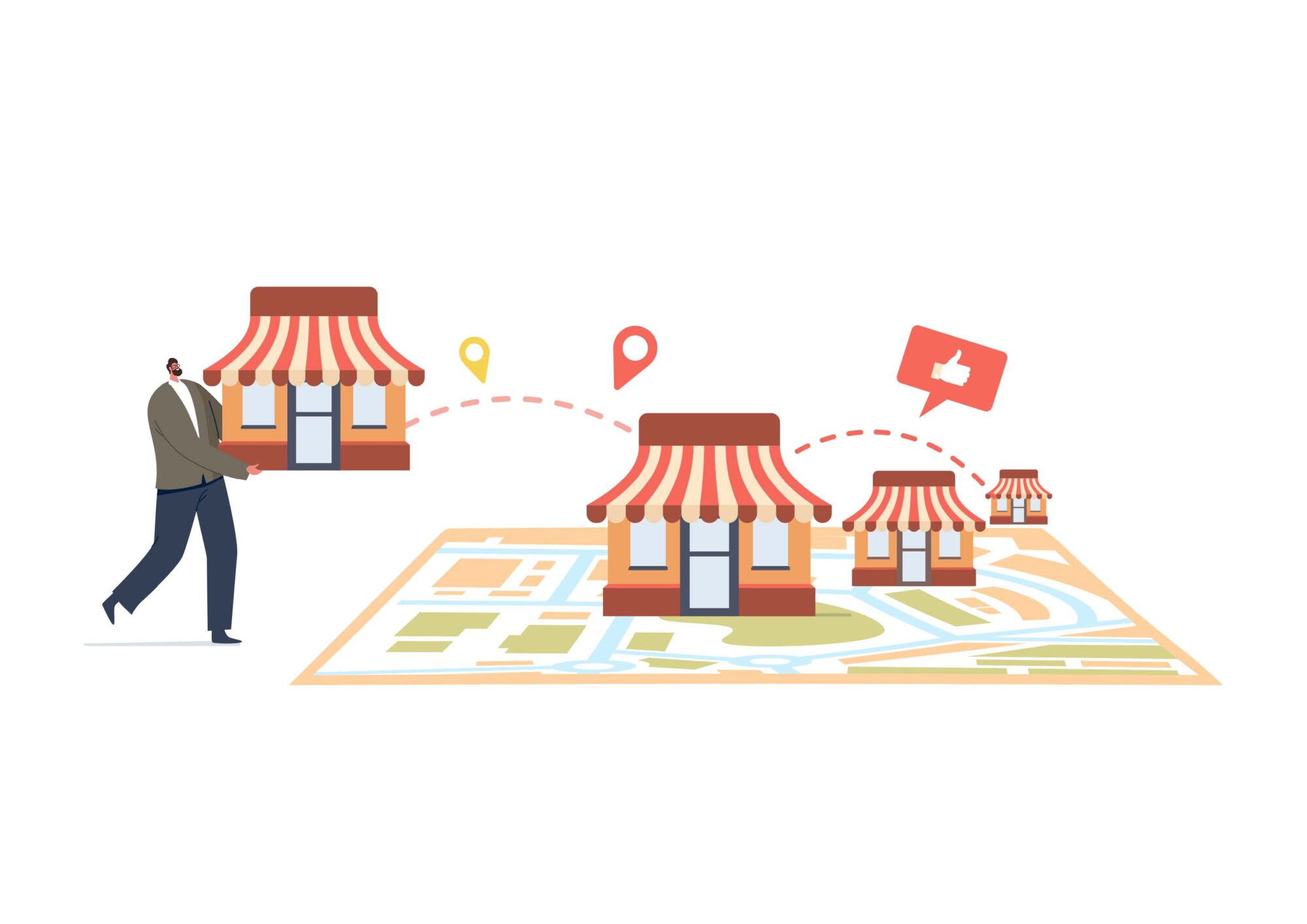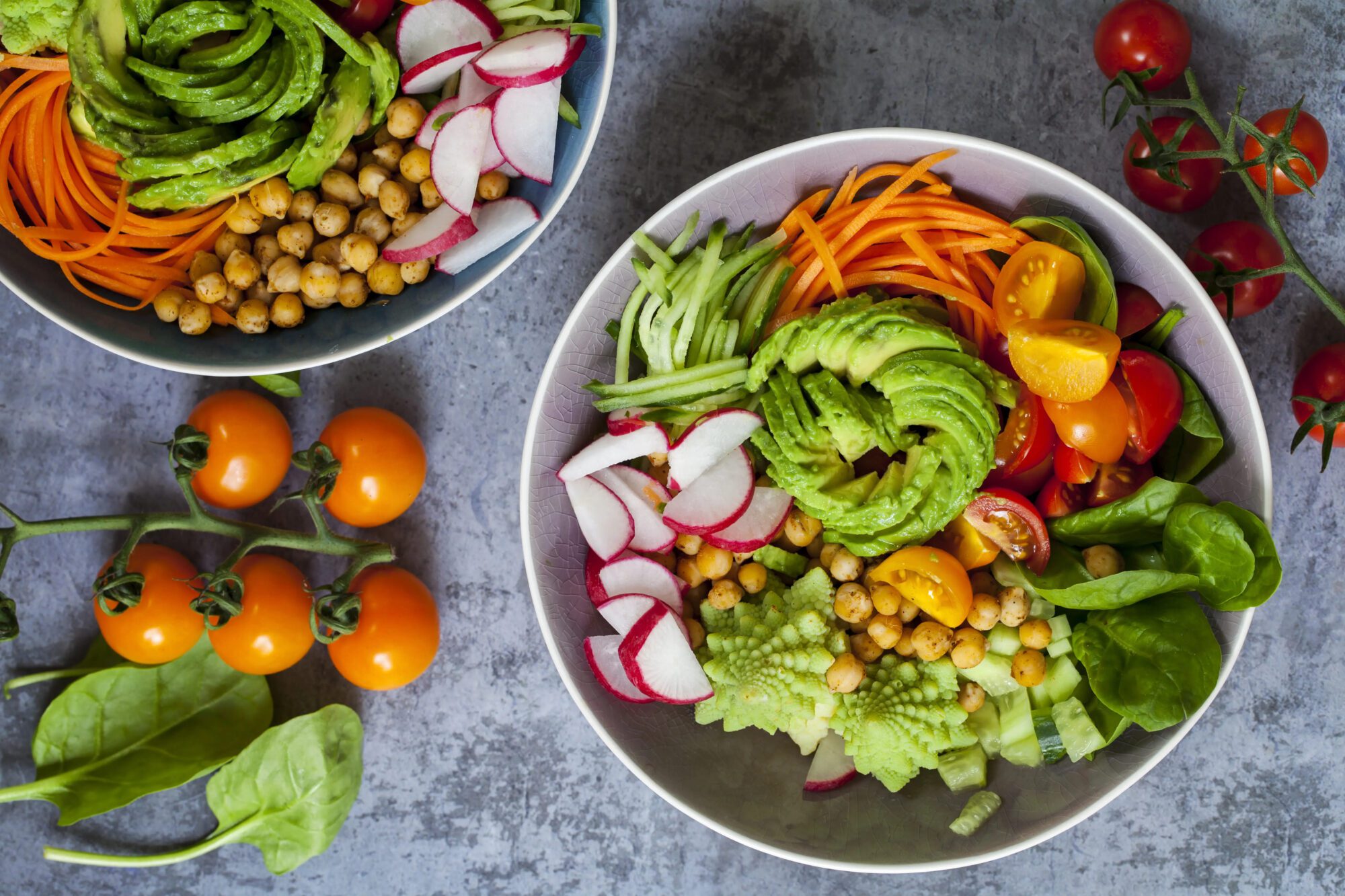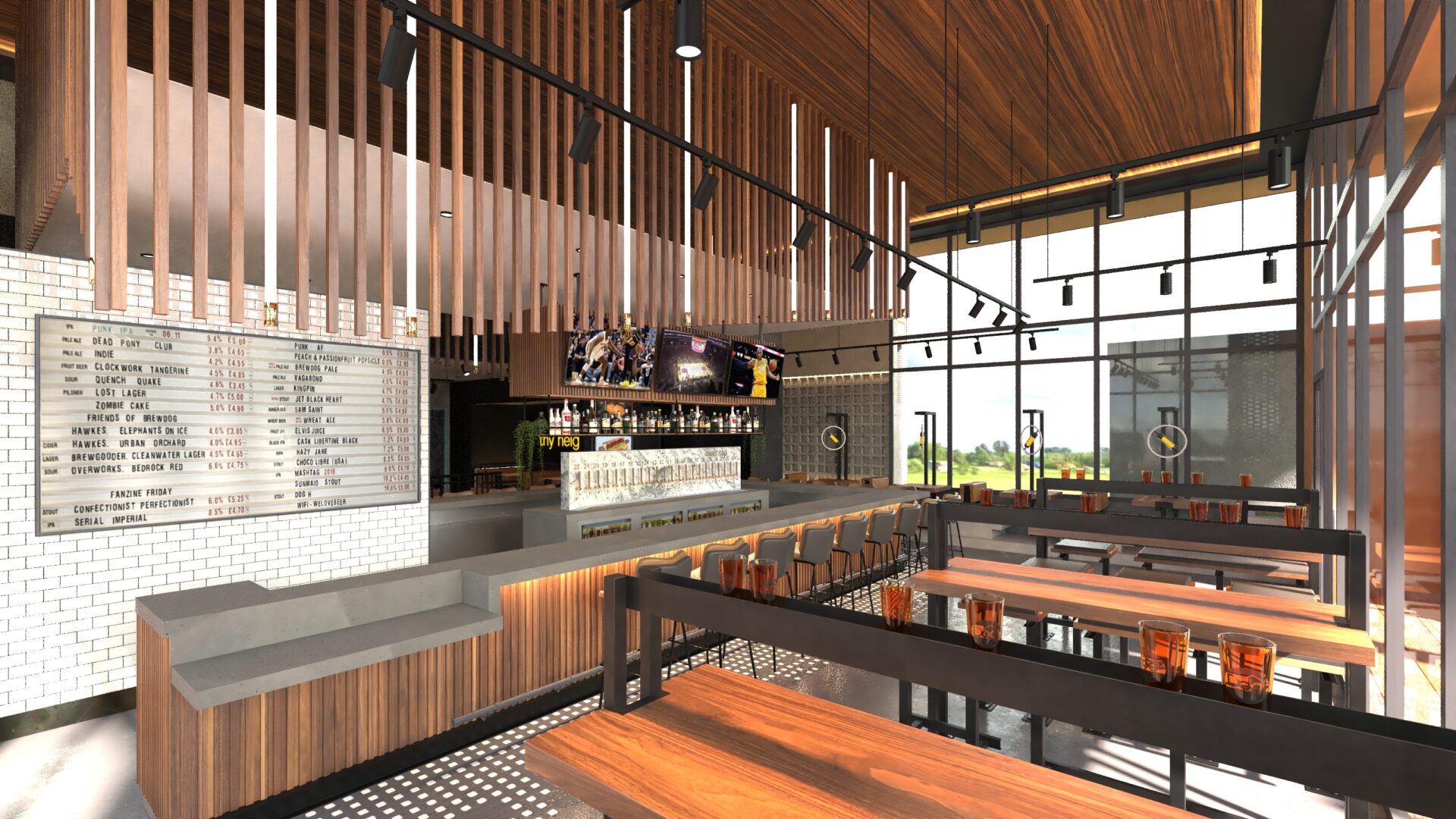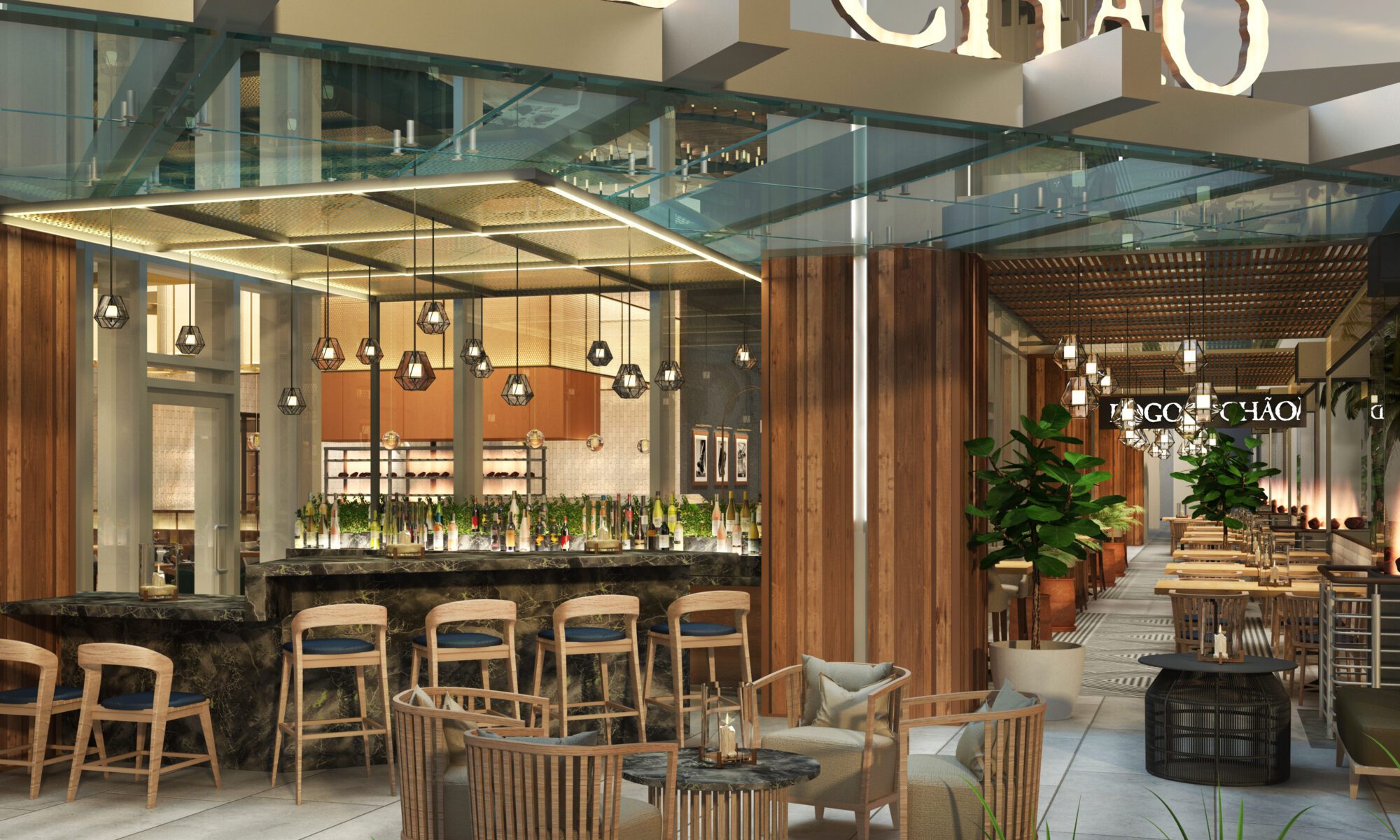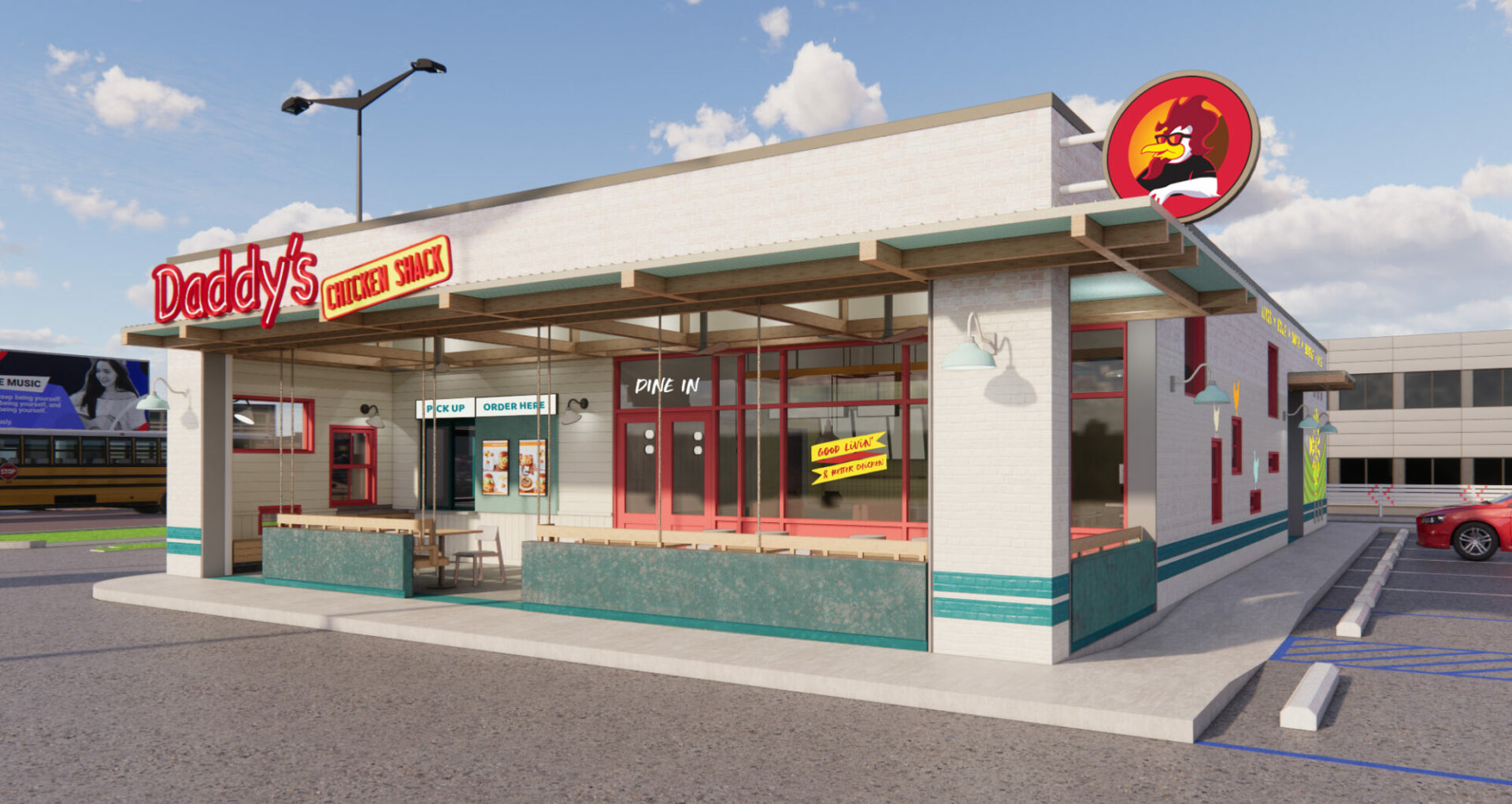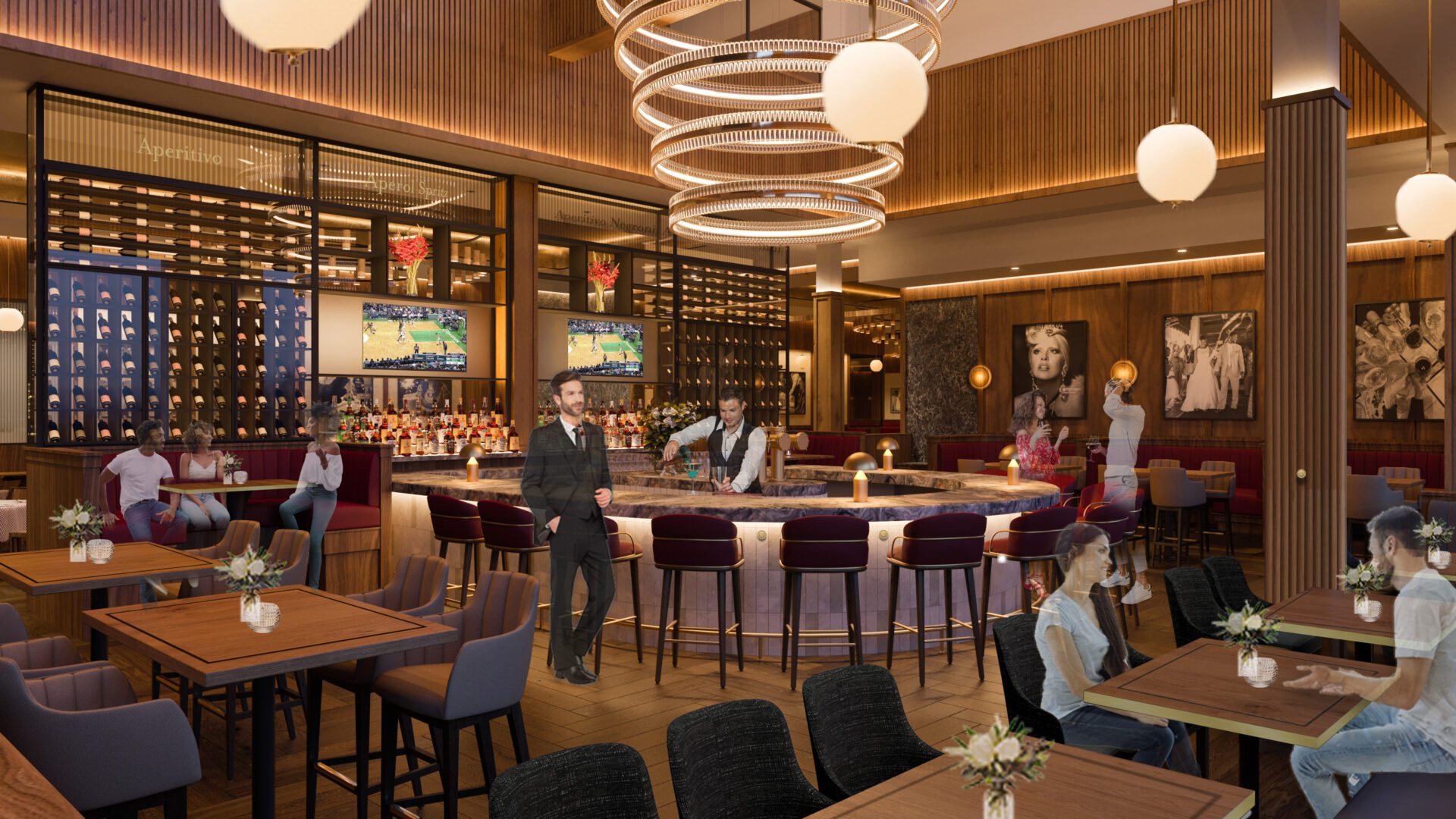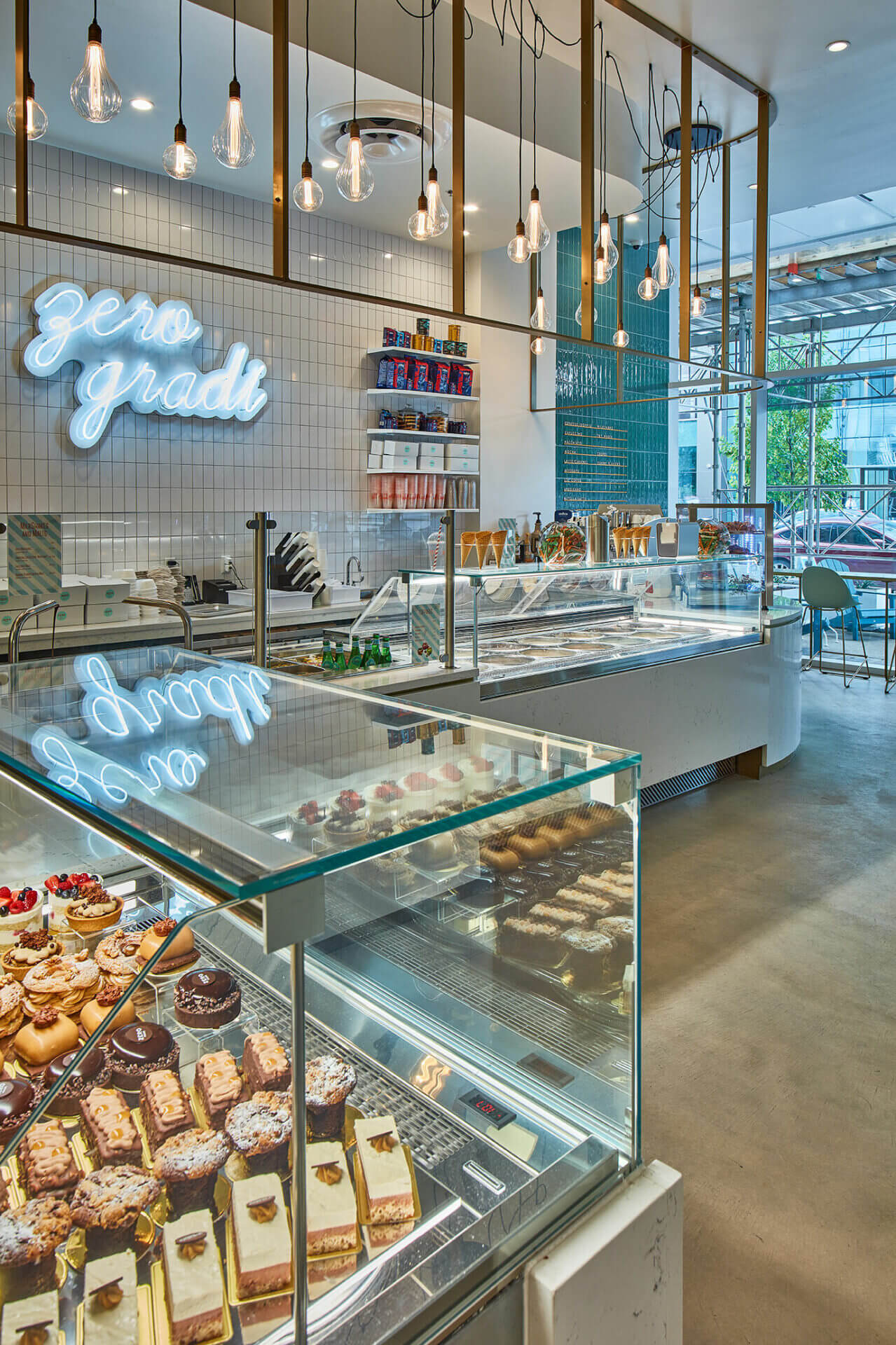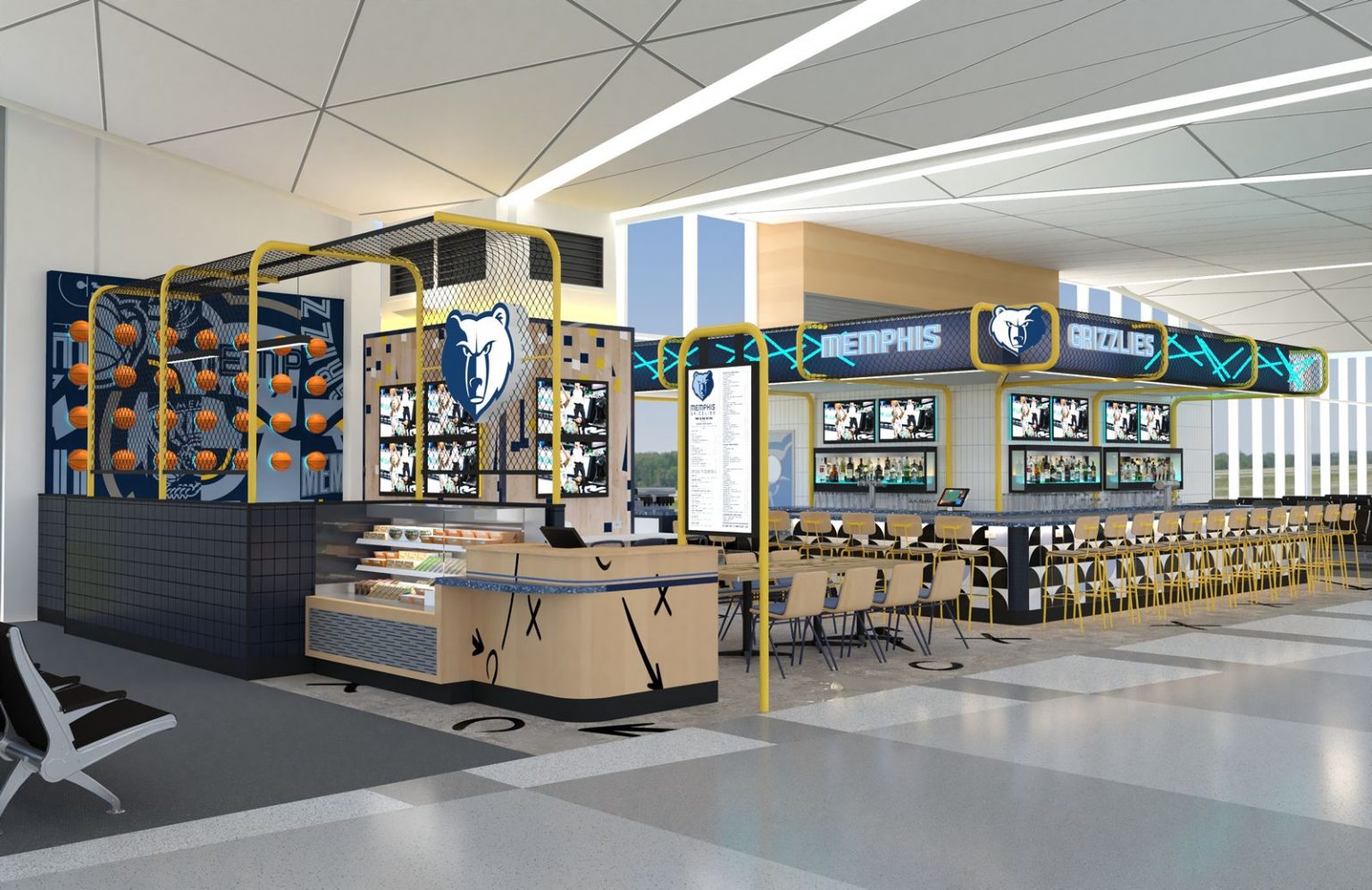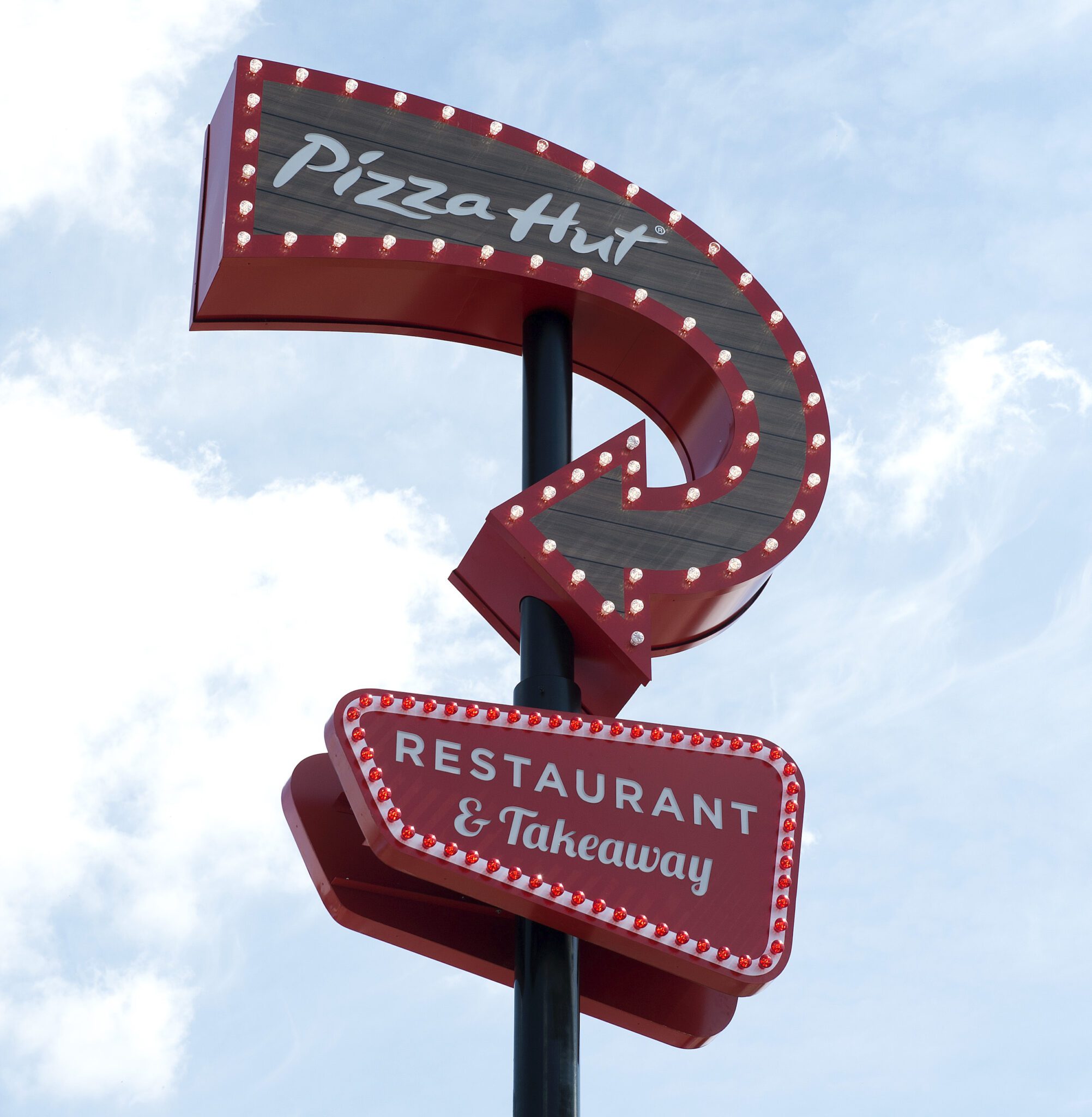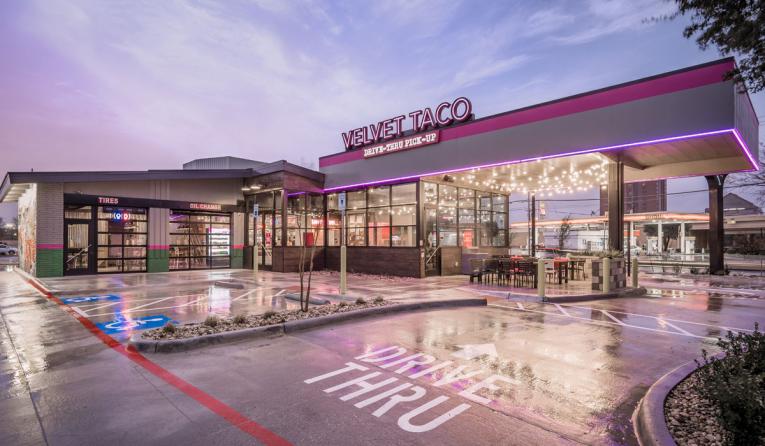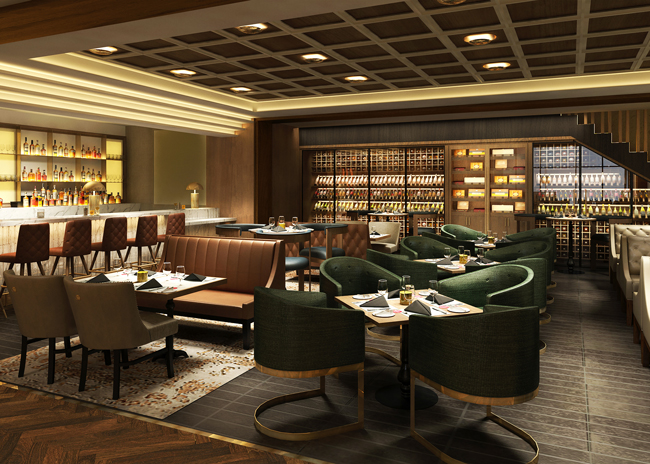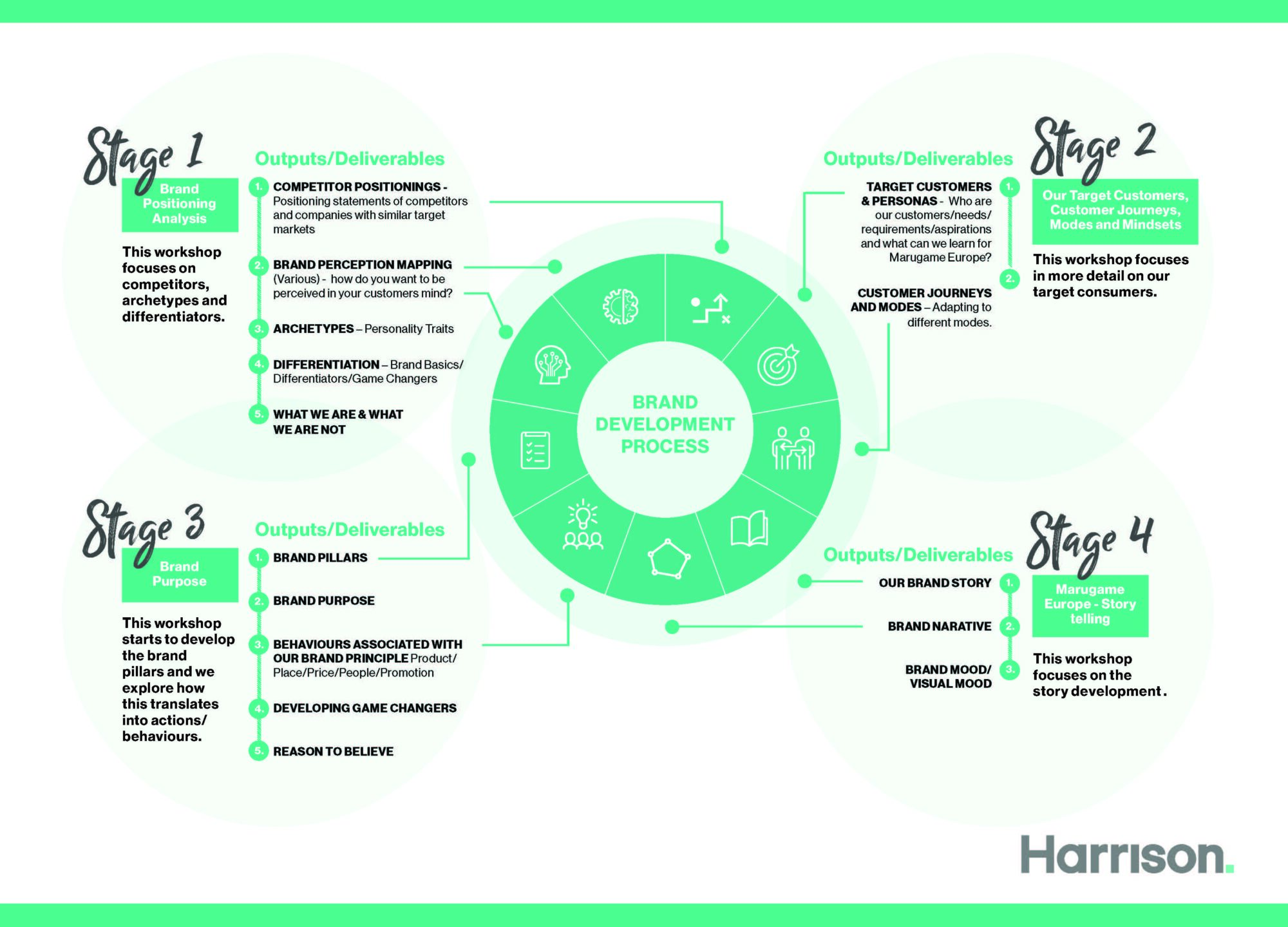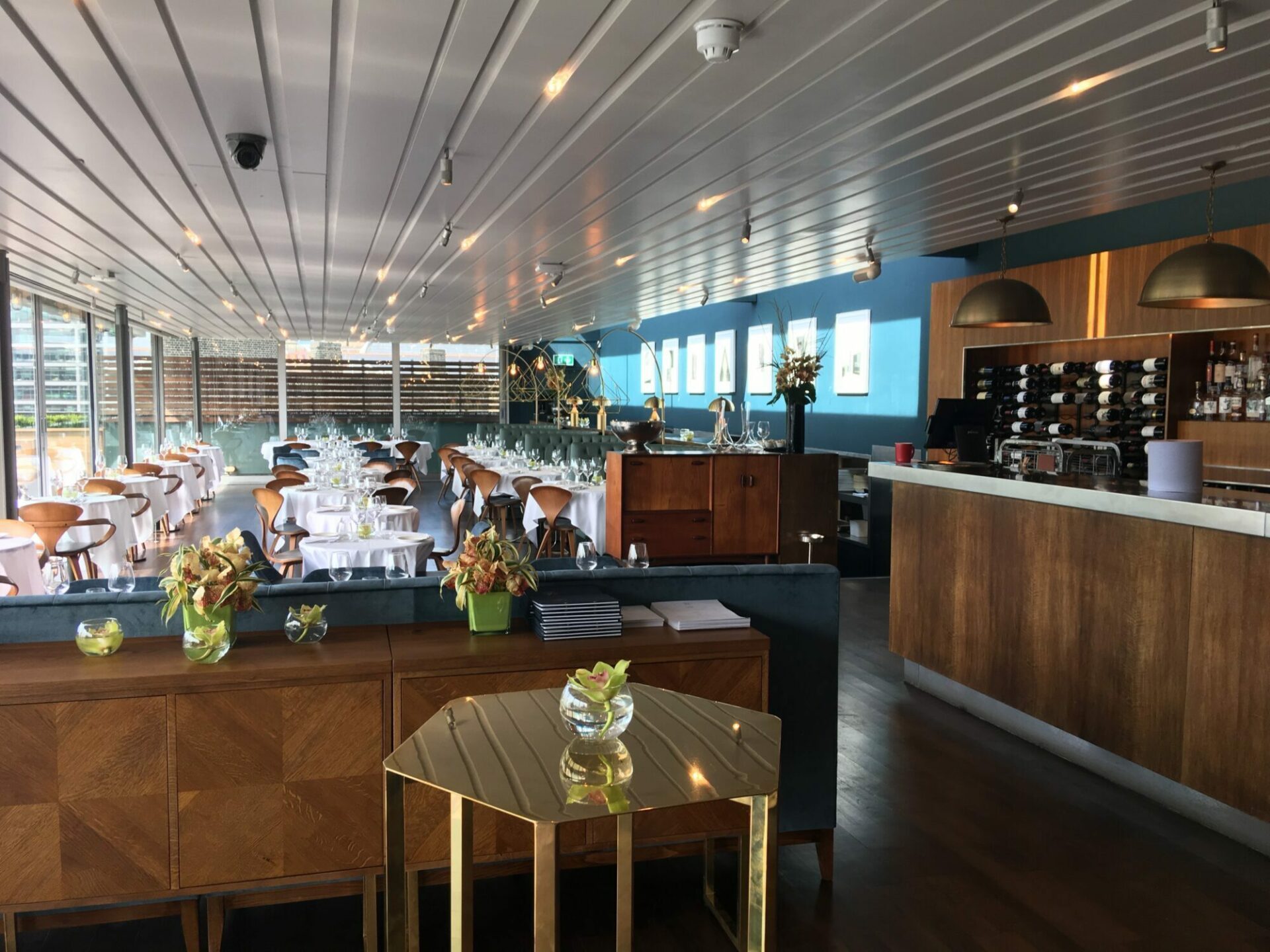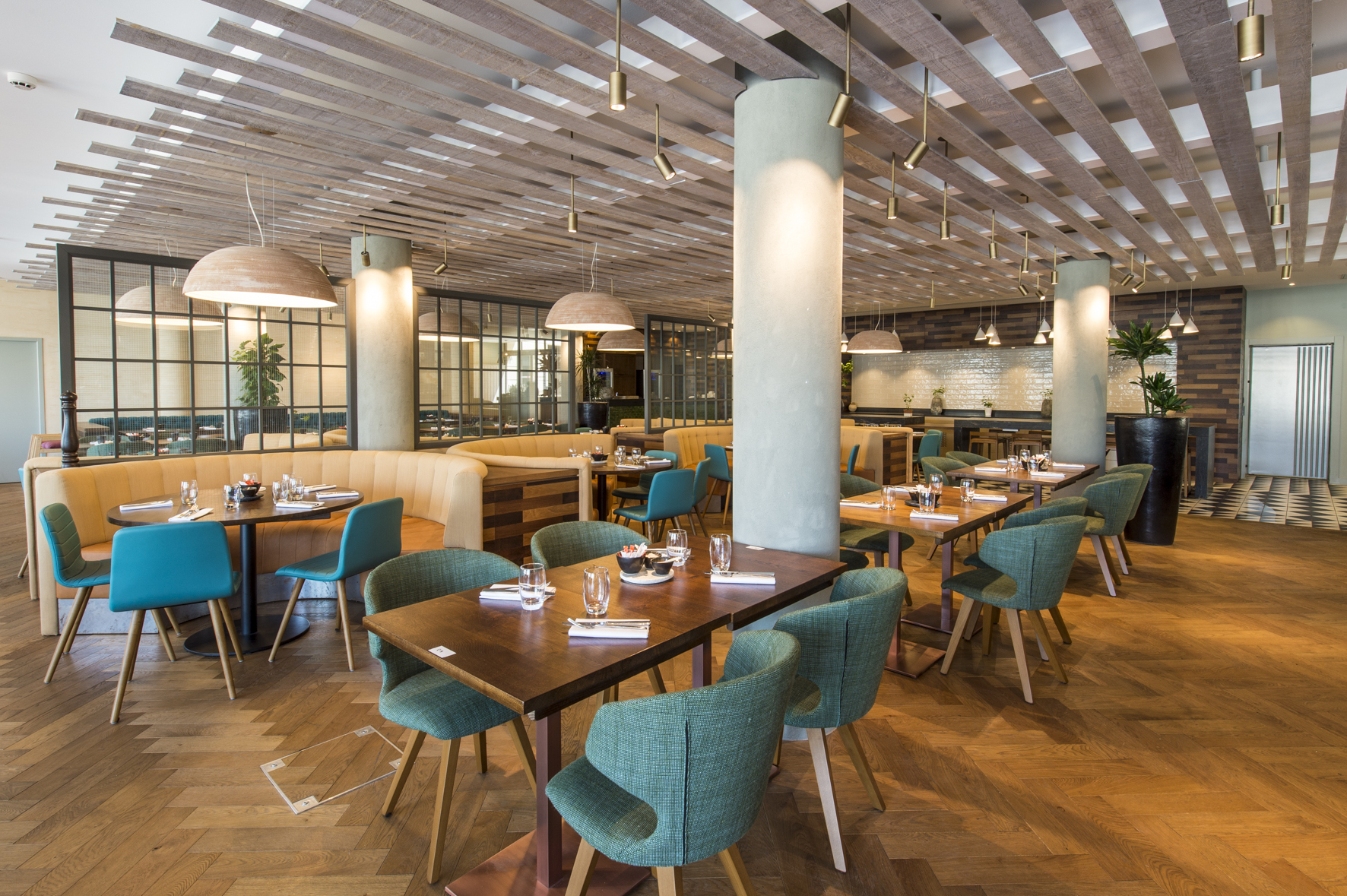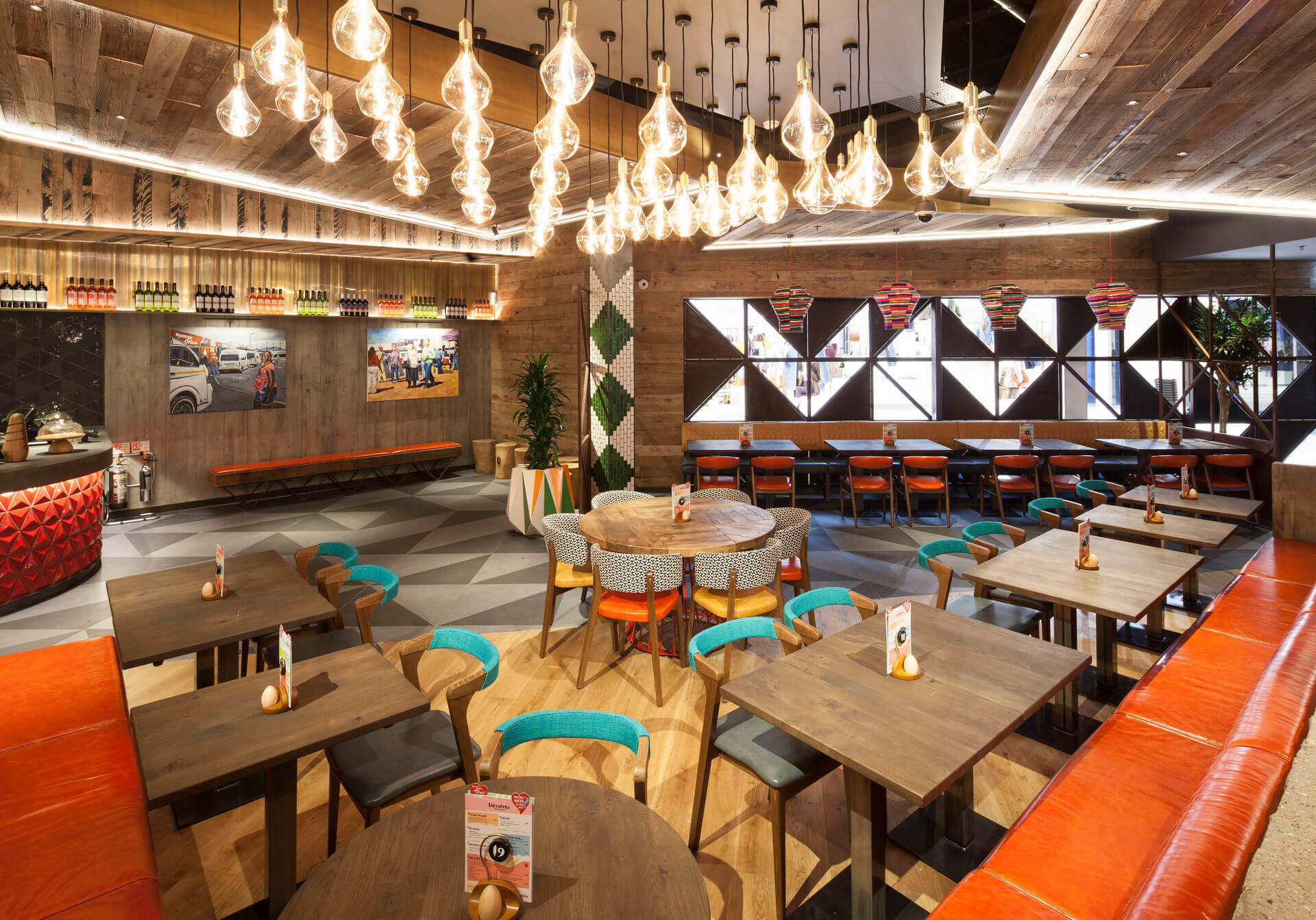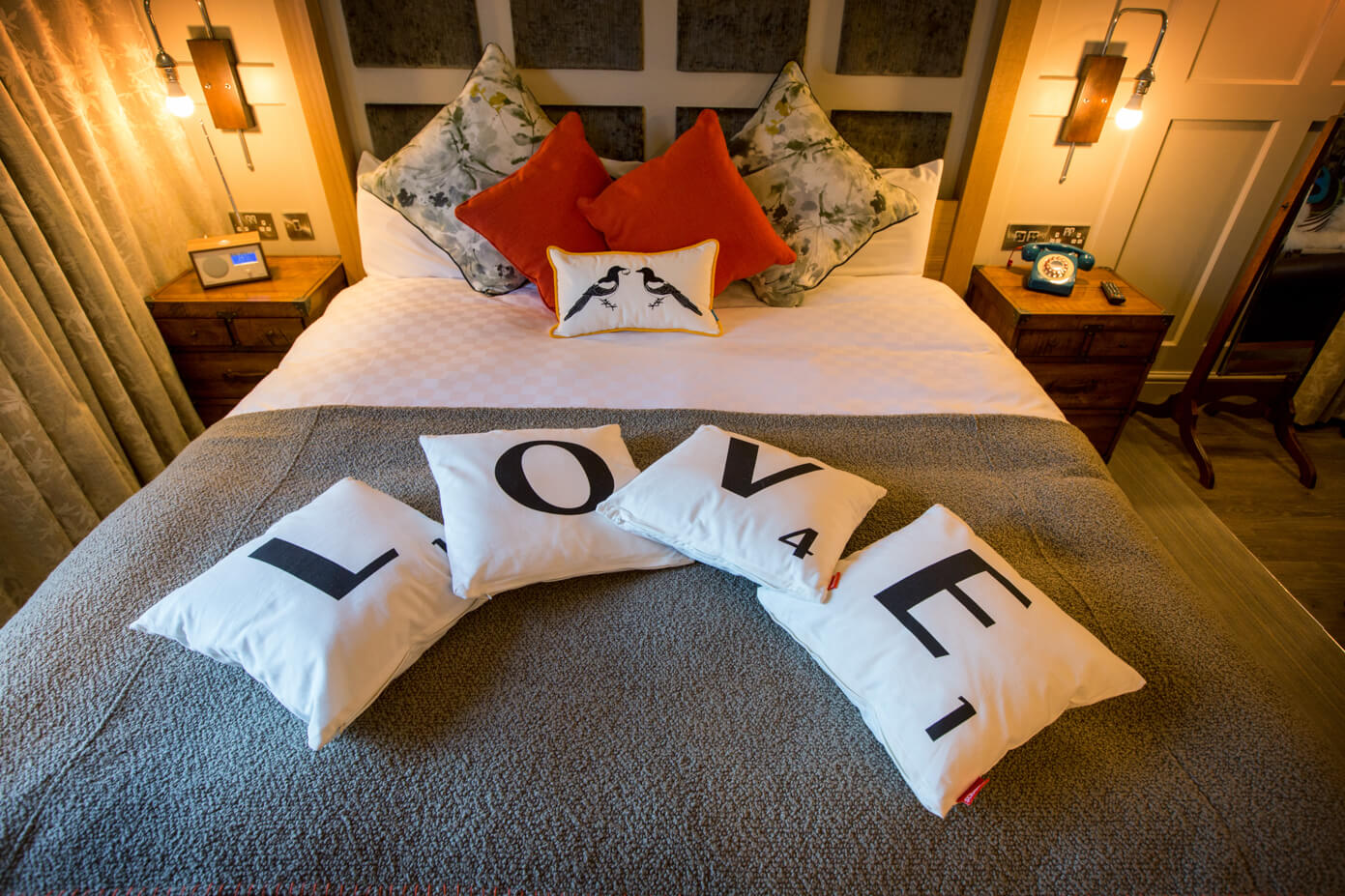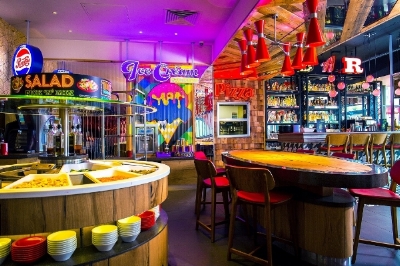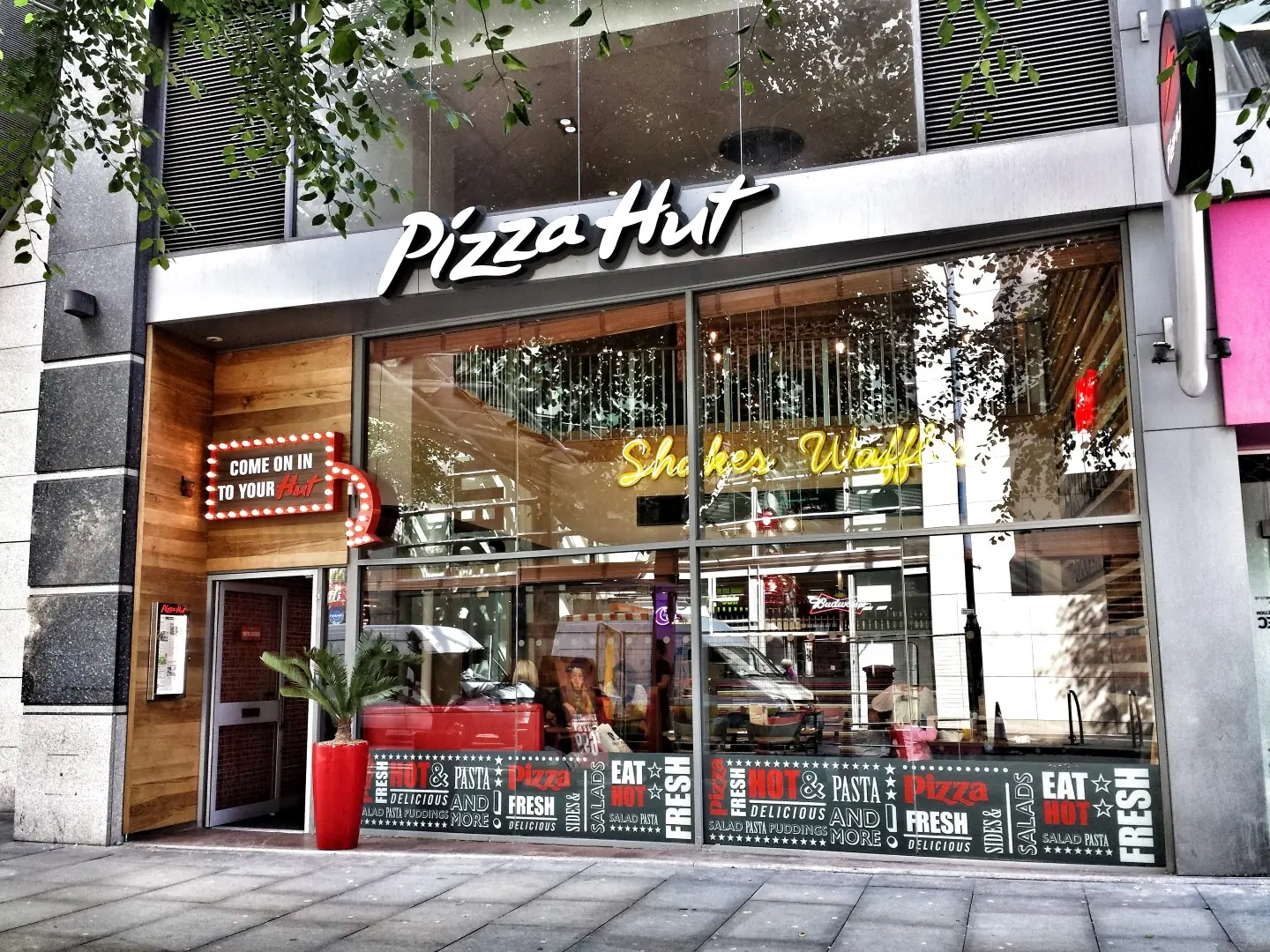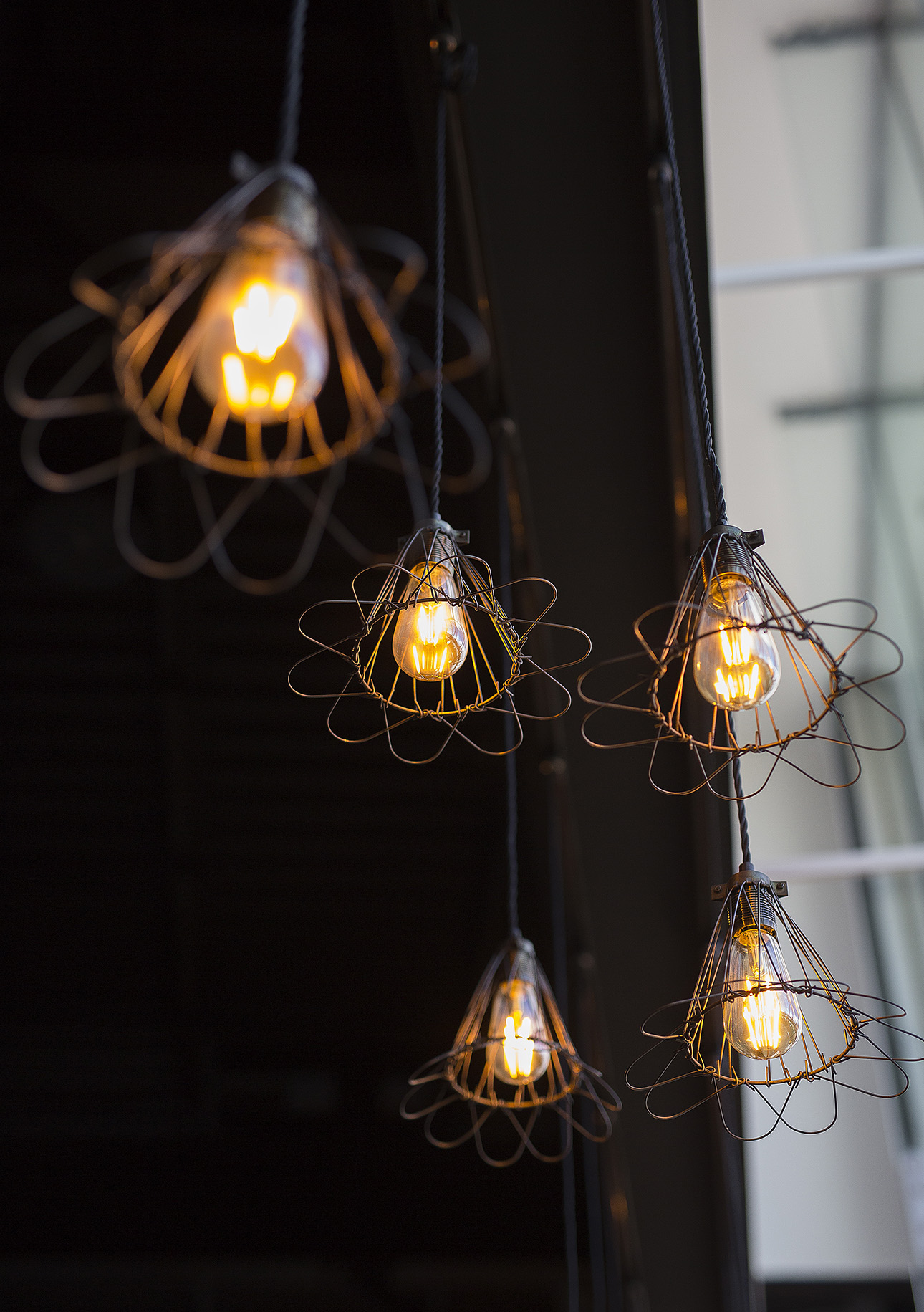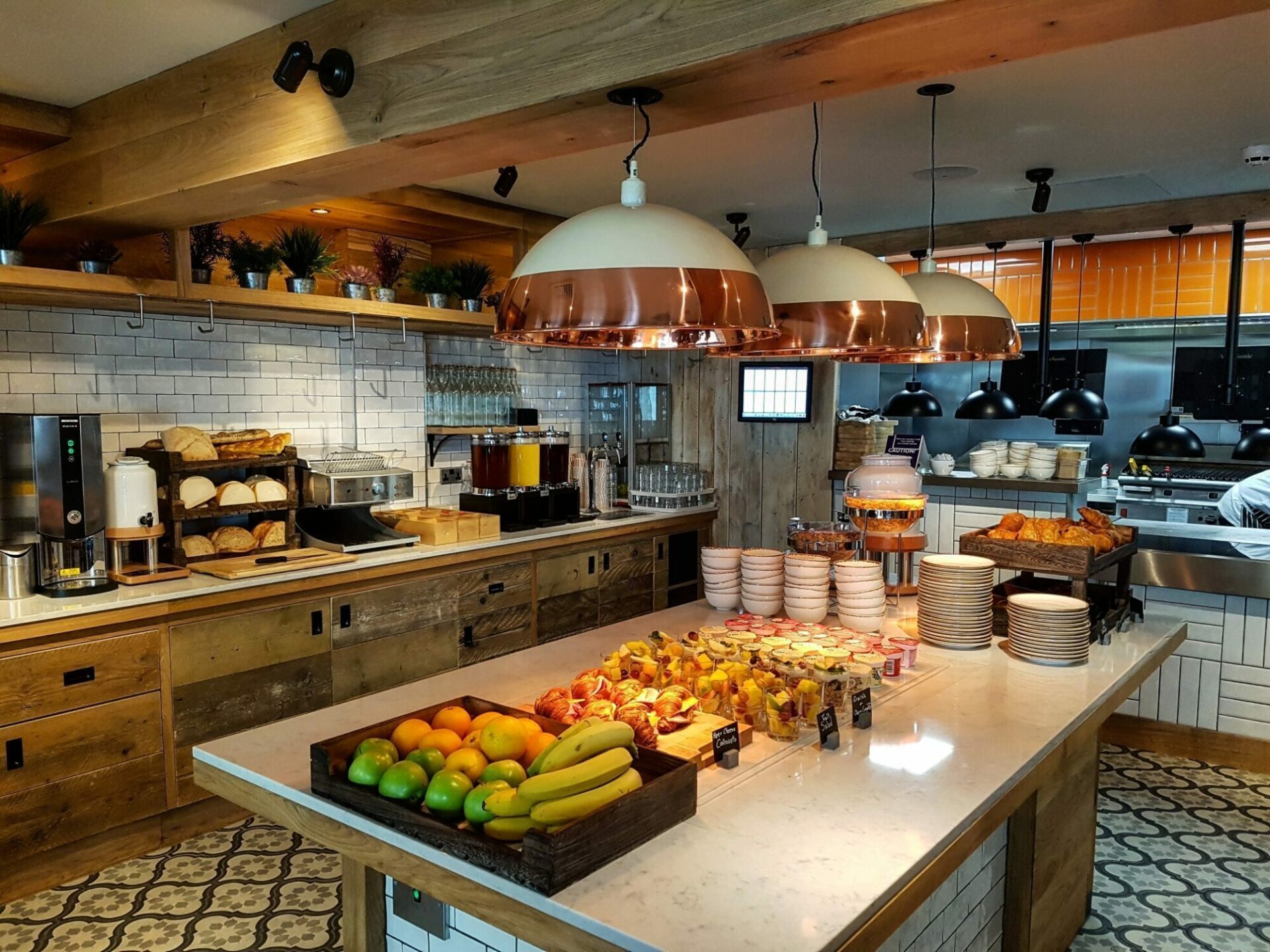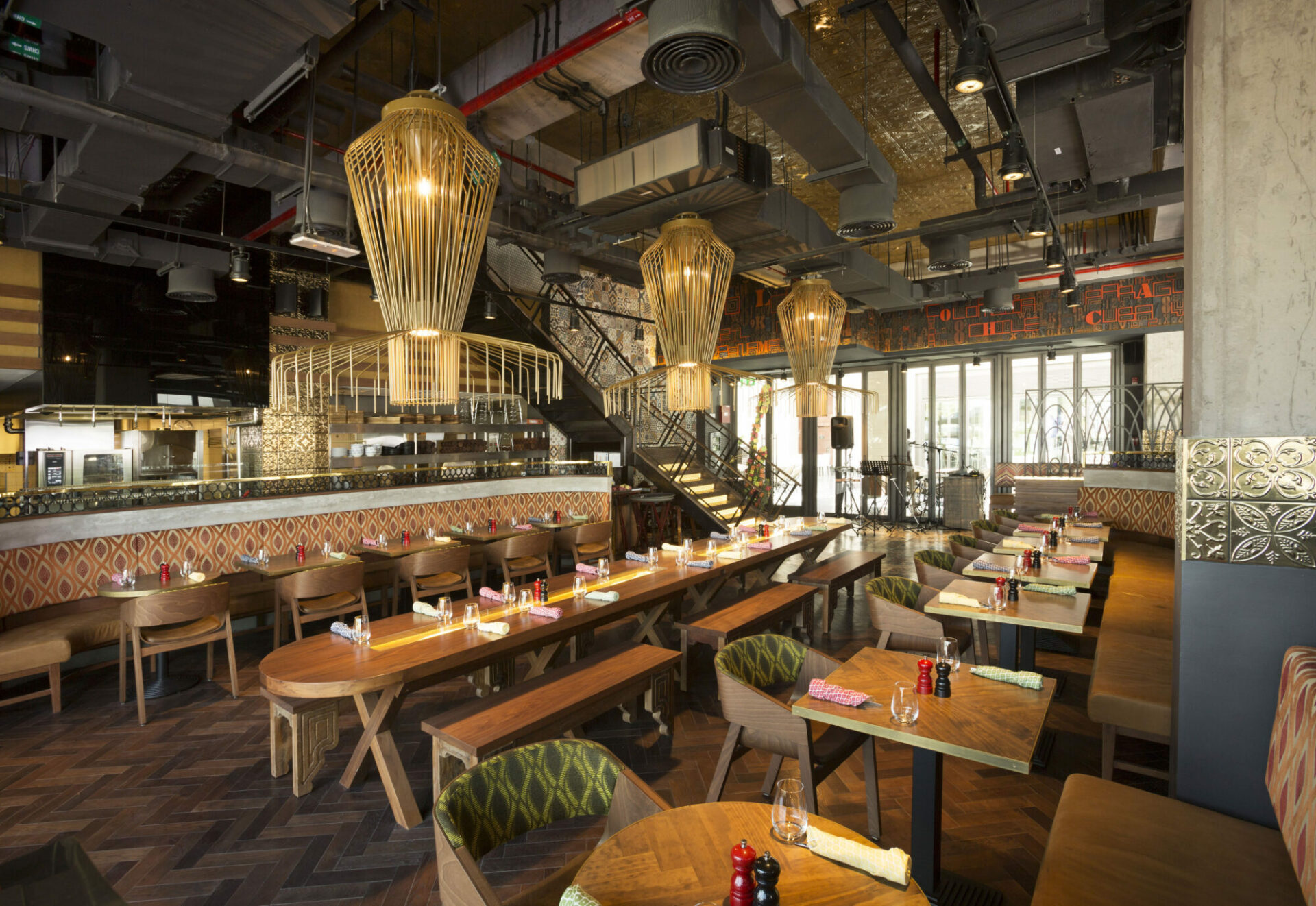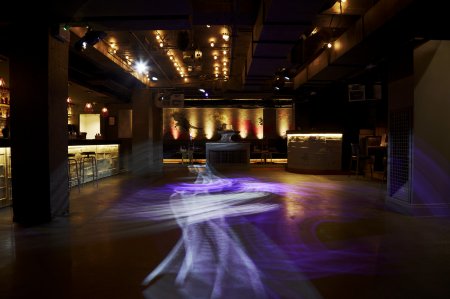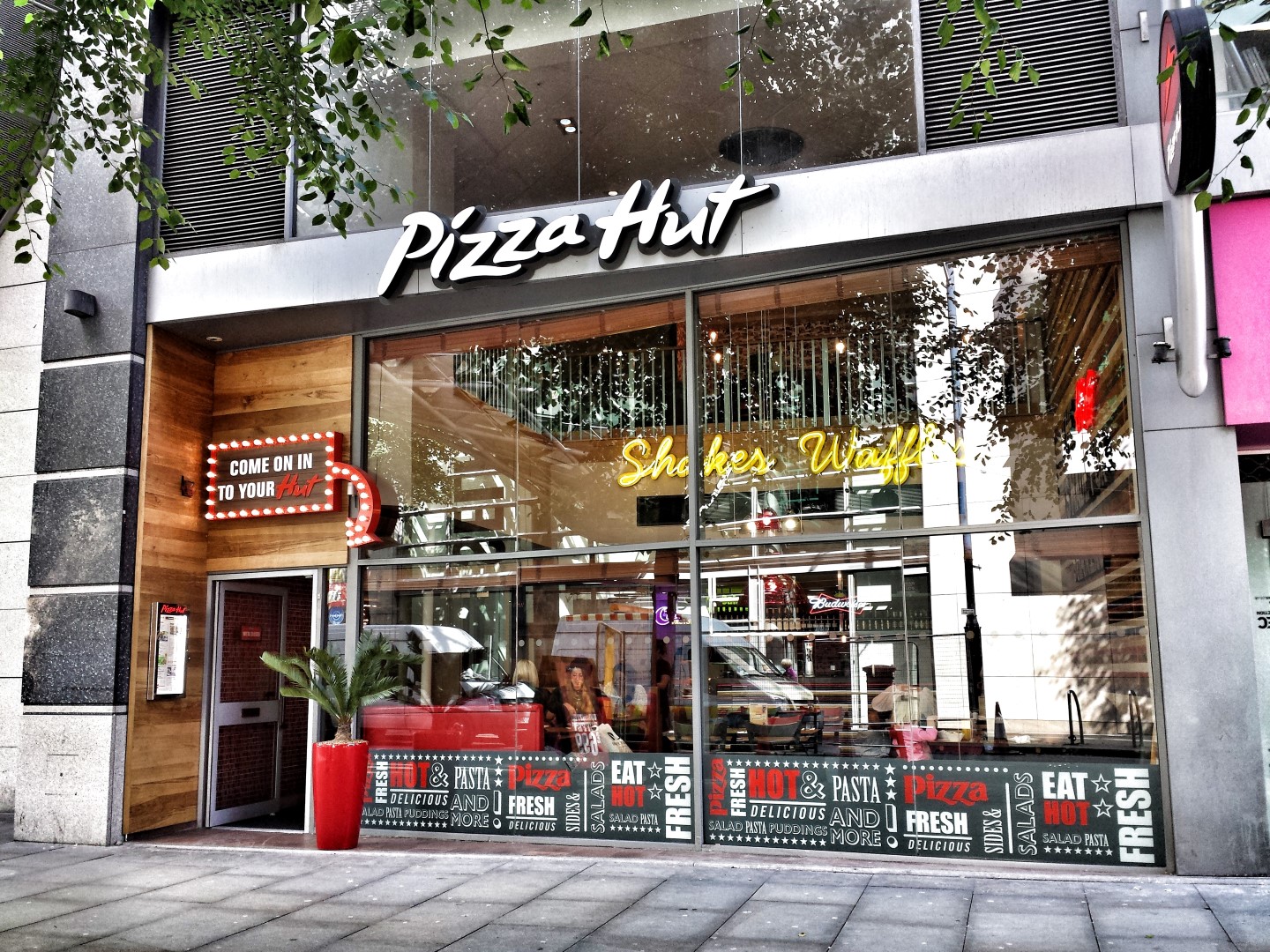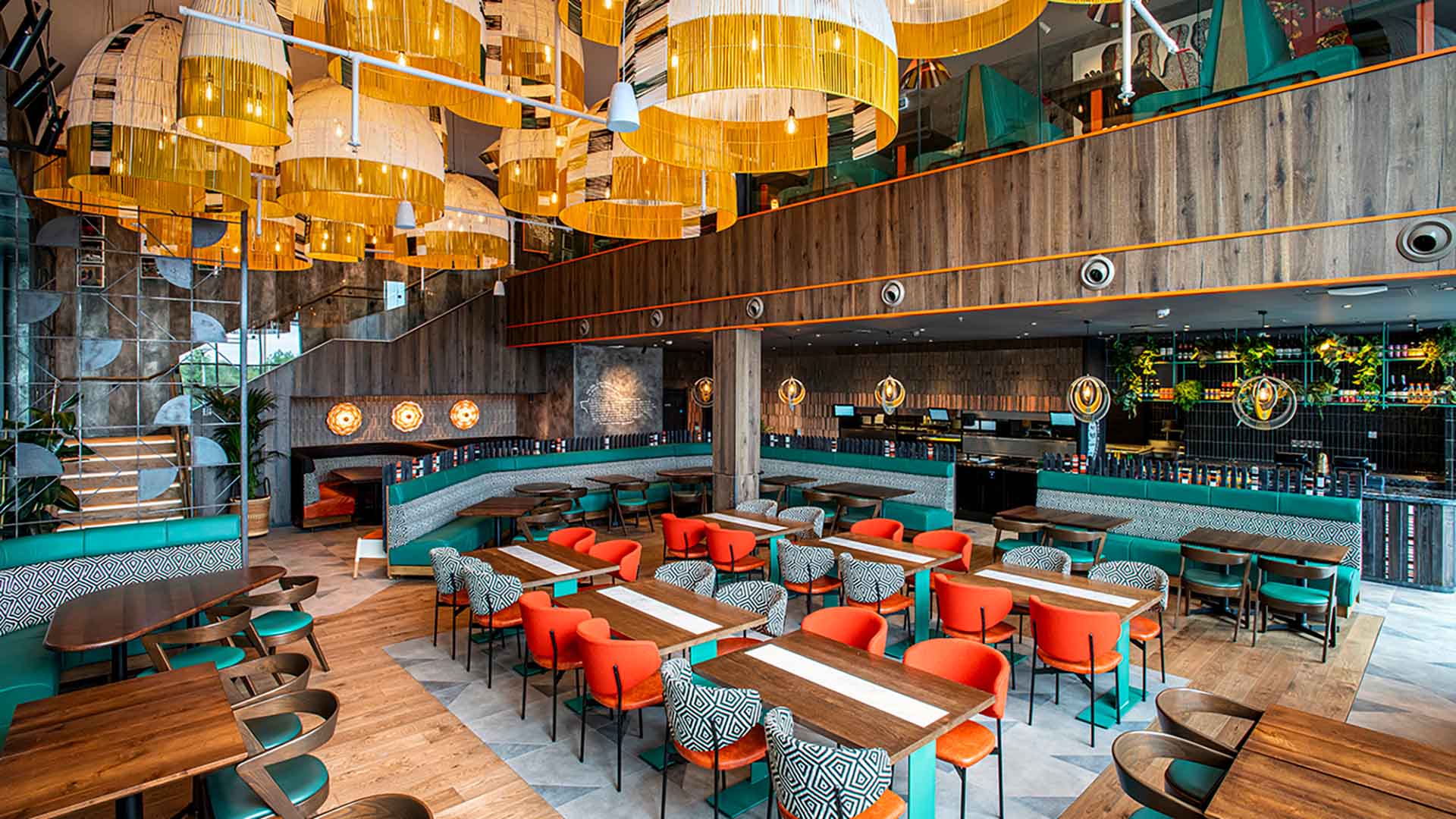As Chipotle continues its UK expansion, the brand has quietly refined its interiors to reflect both its American identity and British consumer expectations.
In a conversation with MCA, Harrison, the design agency behind recent UK sites including Westfield, Gloucester Road and Lakeside, explained how a new design direction is being rolled out with careful attention to sustainability, spatial challenges and visual storytelling.
“There’s no doubt QSR is an American invention,” Kevin Grima, executive director at Harrison, tells MCA. “It’s designed for efficiency – you go in, grab your food, and get out. But in the UK, the consumer experience is different. People want to sit down in a nice environment, especially when it’s pouring with rain outside. So you have to work harder to entice people in.”
Chipotle’s minimalist DNA, rooted in architectural clean lines and natural materials, remains central, but with localised warmth.“They love light and shadow,” Grima adds. “In the UK, we’ve introduced warmer tones, leathers, cork, corten steel, and embraced original features of heritage buildings instead of cold finishes. At Gloucester Road, which used to be a bank, we retained timber doors and skylights and restored the original coving.”
That sensitive approach is not only aesthetic, but strategic. “You can’t design a cookie-cutter concept into every building. We design the brand into the space, not the other way around. Each site feels unique but still unmistakably Chipotle.”
The new sites have also been shaped by operational learnings from both the UK and US markets.“We always push to get the counter as close to the window as possible,” says Grima. “That visibility drives footfall. If you see the guacamole being made, that’s theatre – and it sells.”
Karen Lawson, senior interior designer at Harrison, explained: “Every layout starts with operational flow. The goal is to move customers smoothly through the space, with a clear line of sight to fresh ingredients and food prep at all times. The counters have clear glass, and the kitchen is always on show – that transparency is key to the brand.”
Chipotle’s commitment to sustainability also underpins the UK design direction. “They’ve always been one of the most sustainable brands in the US, and we try to bring that through here,” says Grima. This includes the use of recycled materials such as cork, reclaimed timber, and terrazzo-style counter panels made from woodchip offcuts. “It’s not just about aesthetics, it’s about the planet, durability, and impact.”
“We want every material to earn its place – ideally, it should be recycled, recyclable, or natural,” adds Lawson. “But it also needs to hold up in a high-traffic, high-turnover environment.”She points to features like cork lights, durable leather upholstery, and a resin-based material on counters made from timber waste. “These aren’t just decorative choices. They reinforce the brand’s values and still feel tactile and premium.”
The sensory experience is also carefully curated. “Chipotle wants guests to feel immersed in the experience,” Lawson explains. “That means hearing and smelling the cooking – the sizzling, the clatter of pans. It reinforces the freshness and theatre of what’s being made.” At high-traffic locations like Lakeside, lighting grids and bold signage help anchor the brand, while new features such as mobile order pick-up shelves (MOPUS) and varied seating zones support Chipotle’s operational model. “We always try to design a clear flow,” says Lawson. “High and low seating, booths, and even bag hooks – every detail is considered to enhance comfort and throughput.”
Each site is unique, but aligned with a shared direction. “We’ve transformed everything from banks to bakeries, always aiming to retain character while layering in Chipotle’s identity,” Lawson adds.“You might see an original brick wall or a set of heritage skylights, but they’re always contrasted with clean signage, consistent colours and tactile surfaces.”
While Chipotle’s UK estate remains relatively small – around 20 sites – Harrison’s evolving design playbook is already informing international sites in Germany, France and the UAE. “We worked closely with the US team to develop a future vision,” says Grima. “There’s consistency, but with flexibility built in. You can see the evolution site to site – Westfield introduced key elements, Gloucester Road built on them, and Lakeside elevated it again.” Chipotle is growing its brand in the UK cautiously and with purpose. “They’re thinking strategically, taking smaller sites, respecting the architecture, and working with a clearer design direction,” Grima adds.
For a brand built on transparency and quality – “no freezers, fresh prep every day, open kitchens”– the interiors are becoming an equally important part of the story.
“The whole experience needs to feel authentic, sustainable, and simple,” Lawson concludes. “And if you do it right, people can feel that – even before they take a bite.”
This article was published by MCA 11th June 2025.
